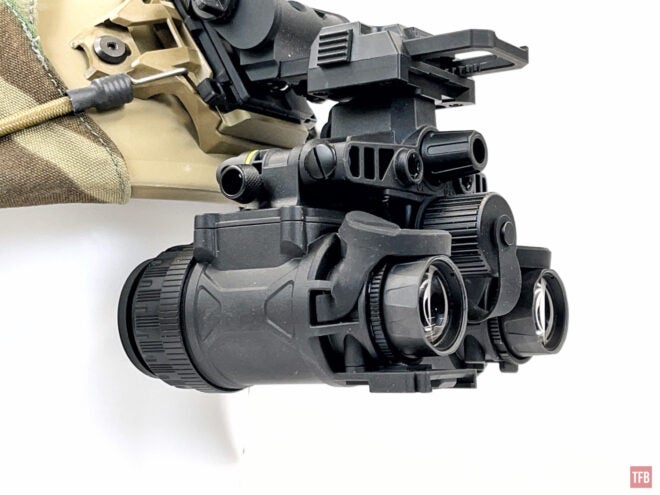Welcome back to another weekly Friday Night Lights. Last week we took a look at some interesting grips from Wilcox but today we take a look at the new night vision housing from InfiRay called the J-31 or Jerry-31. Big thanks to Custom Night Vision for letting me borrow this unit for this review.
More InfiRay @ TFB:
- Friday Night Lights: InfiRay Outdoor RS75 RICO HD 1280 Thermal Scope
- Friday Night Lights: PSQ-20 vs InfiRay JerryF – Fusion Monocular Duel
- Friday Night Lights: iRay RH25 Rico Micro – All-In-One Thermal Monocular, Clip-On, Weapon Sight
- Friday Night Lights: iRay Clip 1 – Jerry CE2 C.O.T.I.
InfiRay Is Making Night Vision?
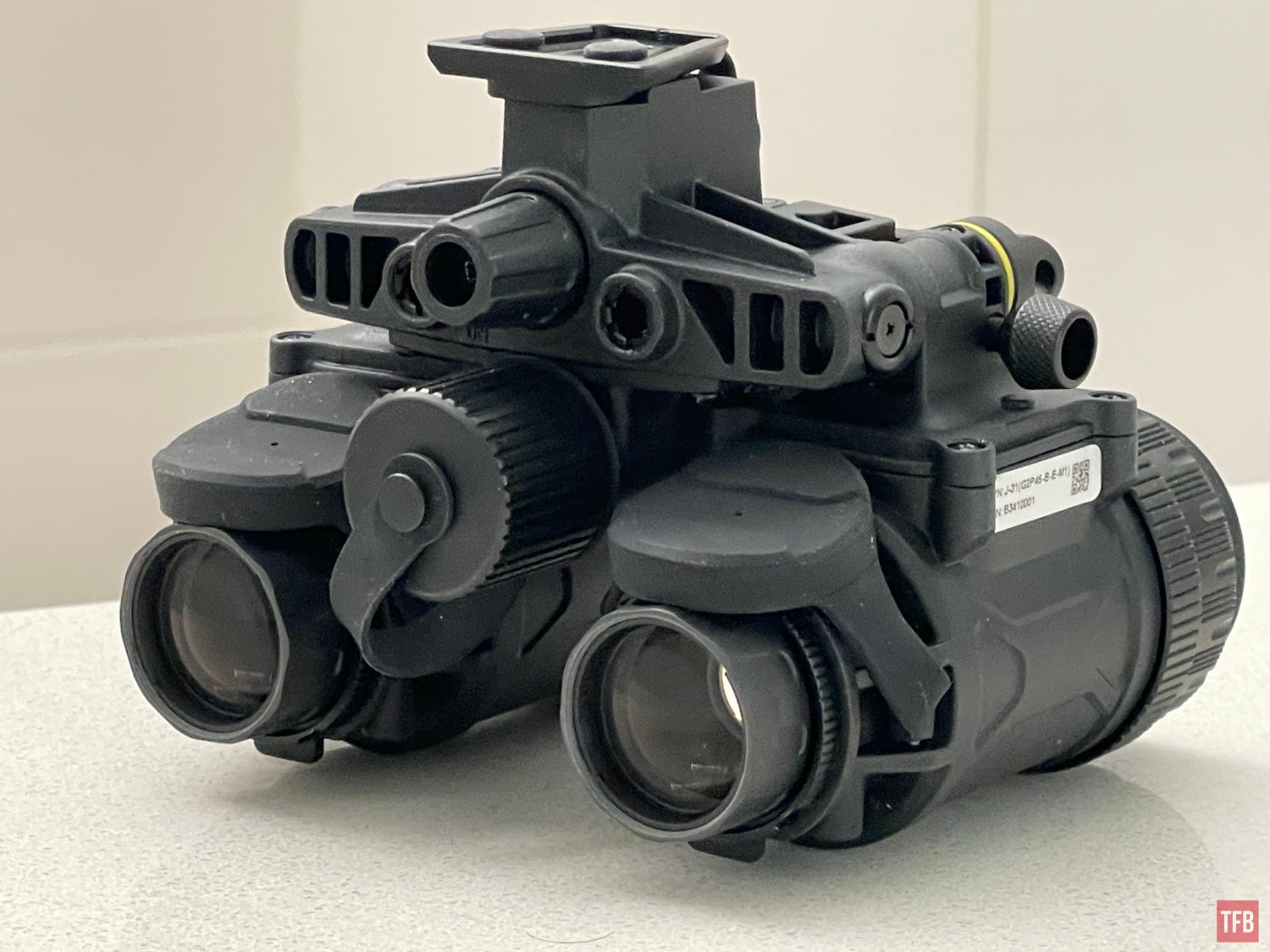
InfiRay is one of the best Chinese thermal companies in the market. Their thermal devices are fantastic and reasonably priced. They have dabbled in night vision but those were fusion systems that had both thermal and analog night vision. Well, now they have come out with their own night vision housings. They have made a monocular called the J-14 which is similar to the PVS-14. But we are focusing on their binocular night vision device (BNVD) called the J-31. The J stands for Jerry which is what they use to name other devices like the Jerry-C COTI and Jerry-F fusion monocular.
The J-31 has design elements that are inspired by the PVS-31A. It has a bridge with a very tall NVG dovetail. The pods articulate on hinges at the ends of the bridge and there are IPD stops that you can adjust with the knurled screws. The screws have knurling but it is not aggressive enough. And the friction of the screws is a little too high so it is easy to slip trying to turn the IPD knobs.
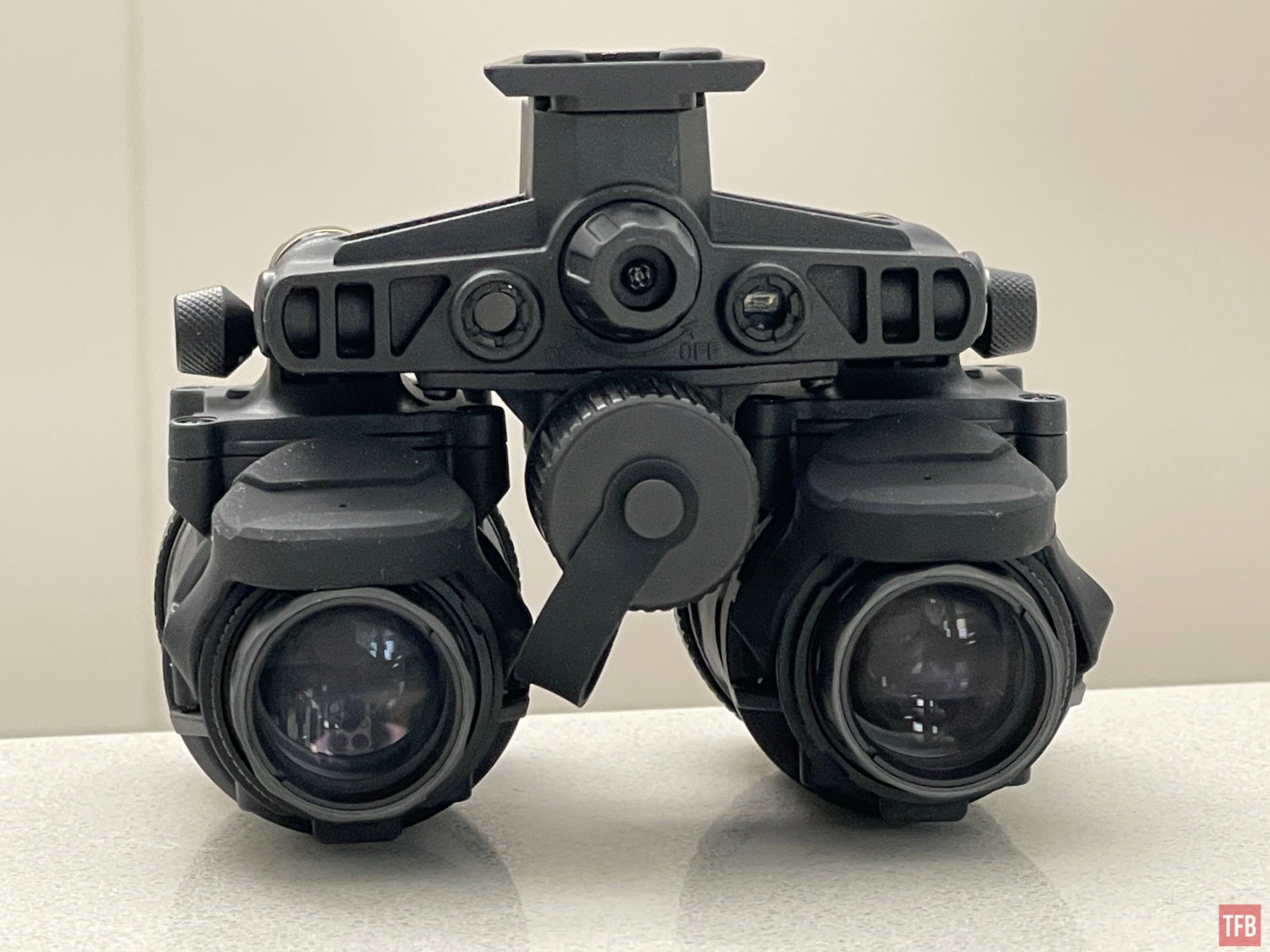
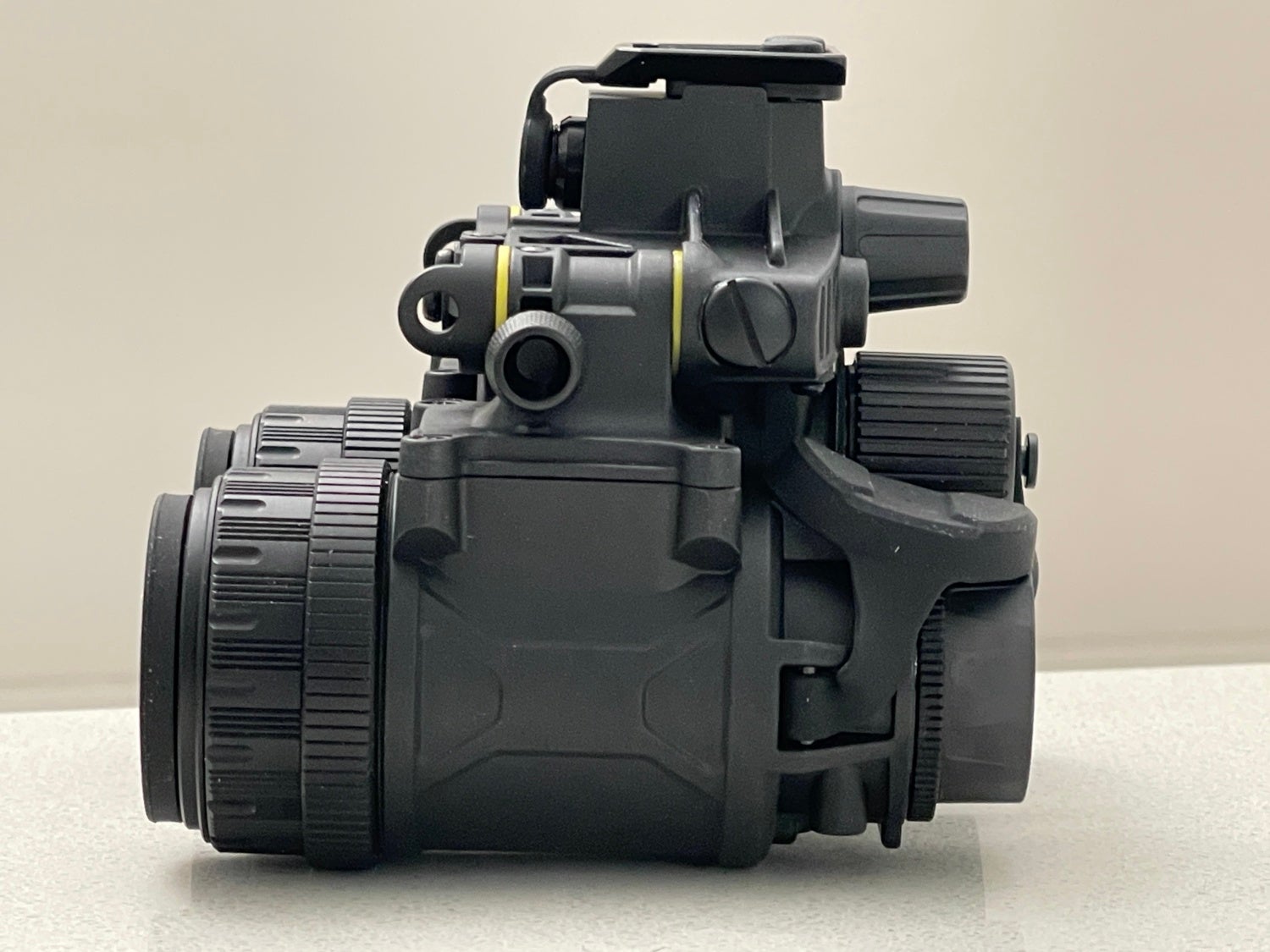
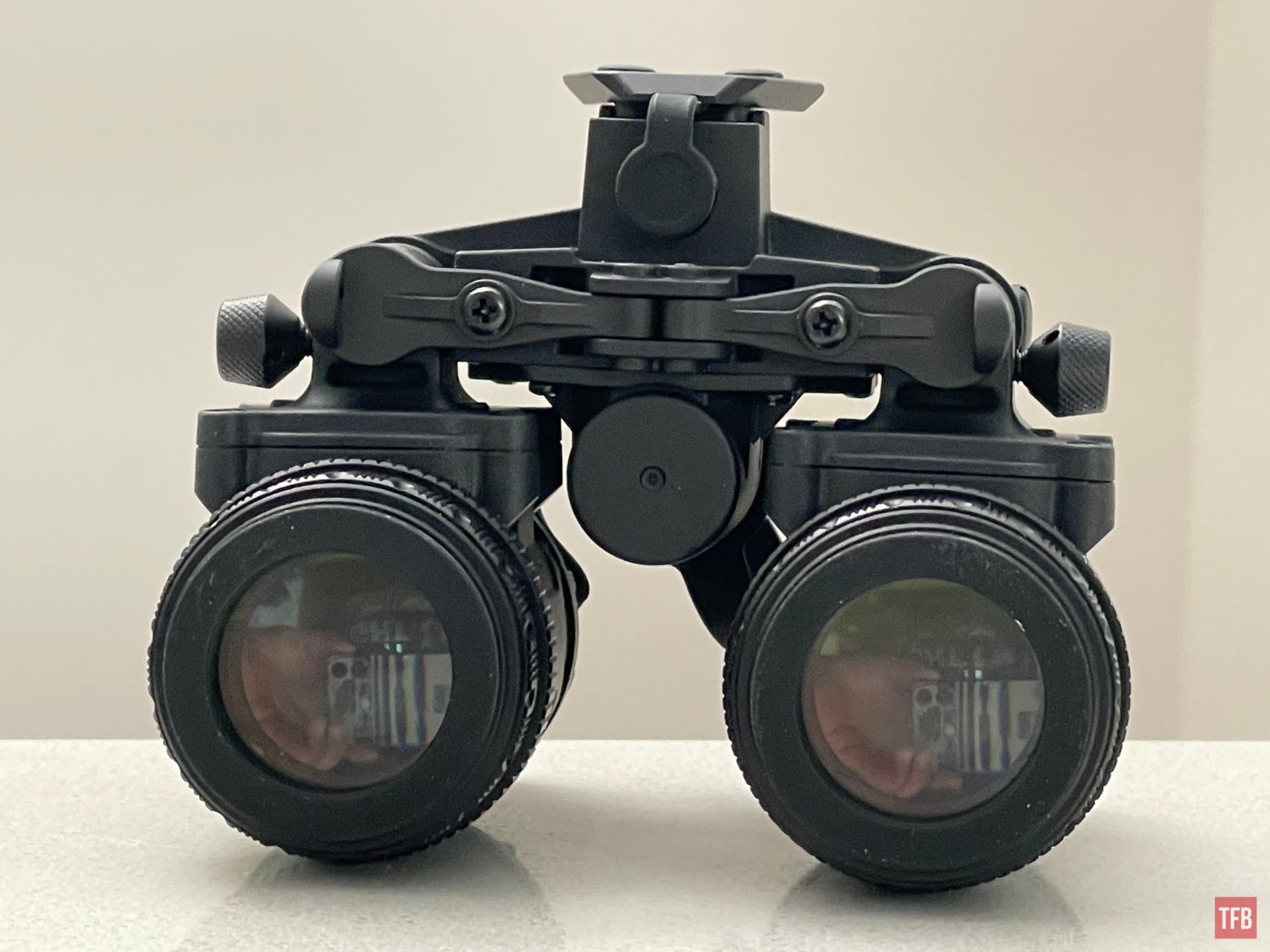
The InfiRay J-31 has a multi-purpose power switch that is a little different from the L3 PVS-31A. Rather than pushing it in like a button to turn on the goggle, you simply rotate it. There is a positive click once you turn it on. Continue rotating the knob and you increase gain. This goggle has manual gain control. Look at the photo below. You can see two circles on either side of the power switch. These are for the onboard IR Illuminator and ambient light sensor.
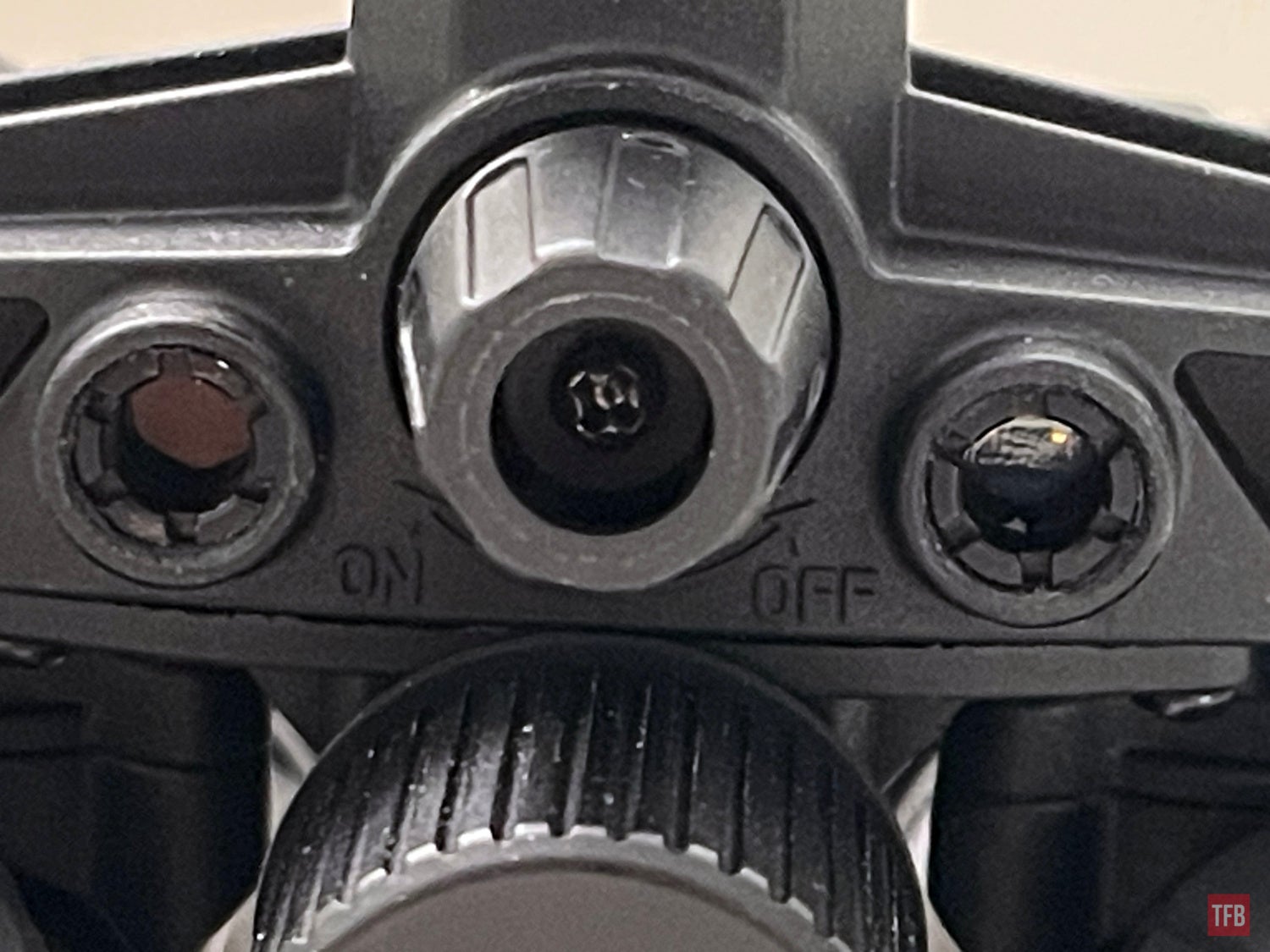
As I mentioned earlier, the power switch is multi-function. You can press the switch multiple times to program the housing. Such as turning on the auto-off function. Just like the PVS-31A, you can program the J-31 to turn off when the goggle flips up on your helmet or you can program that feature off. Additionally, the J-31 can turn off power to the pods when you articulate them up. This is a much desired feature. Something the PVS-31A and Argus 1431 cannot do.
Double tapping the button turns on the IR illuminator. And you can program the ambient light sensor to turn off the goggle if there is too much light. I don’t want this feature but it is something other manufacturers have implemented, like Detyl in their QTNVG housing.
At the back of the dovetail tower is the remote battery pack port. InfiRay went with a 7-pin port which I assume is the same battery pack for the Jerry-CE2/5. The Jerry-31 is powered by an AA battery for 20 hours or 30 hours with the battery pack. The battery pack is sold separately.
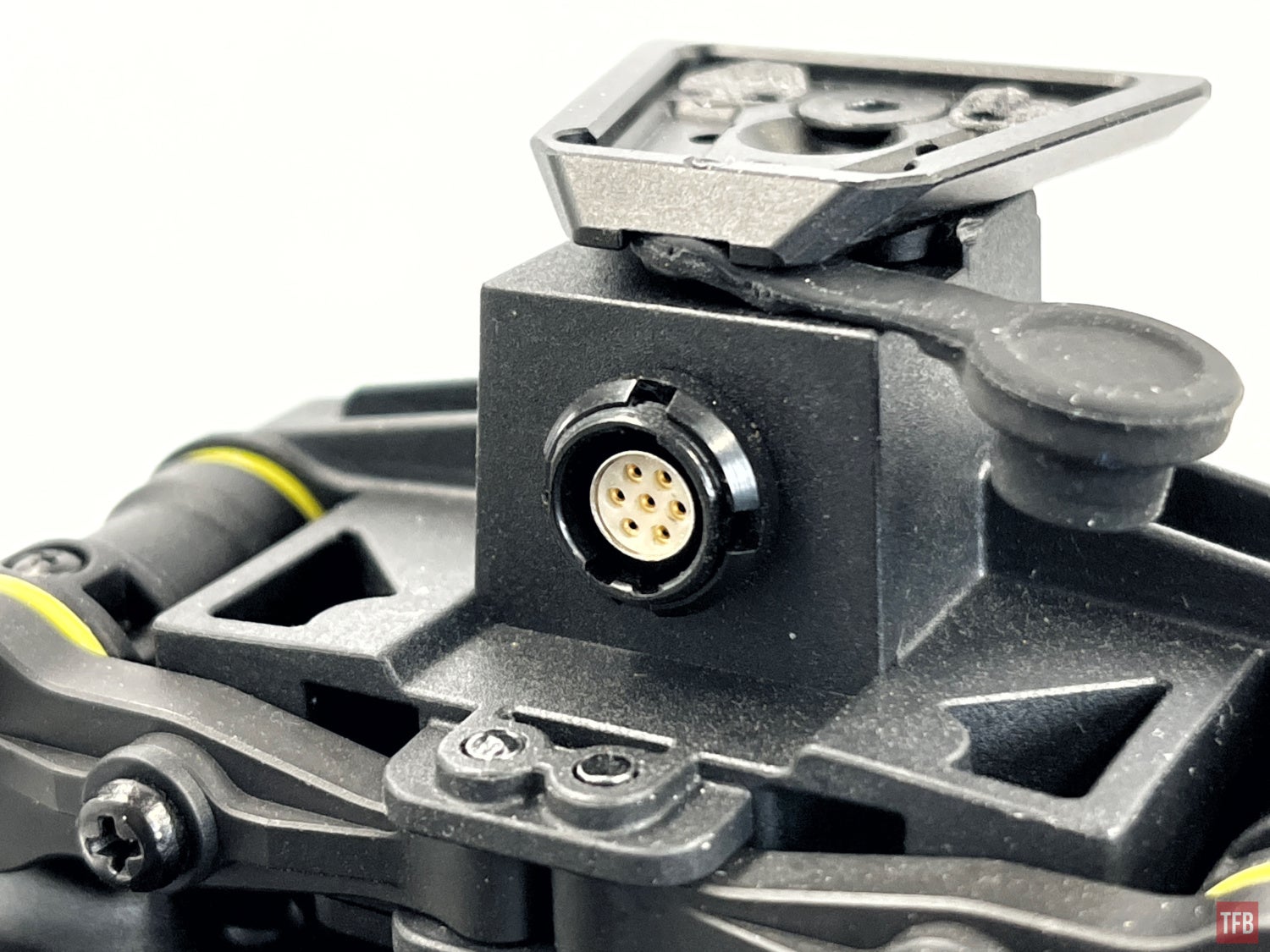
The J-31 Has Jerry-C Integration
One cool feature of the J-31 is that it InfiiRay has designed built-in mounts for their Jerry-C COTI. Underneath each pod, just behind the objective lens, are two threaded inserts.
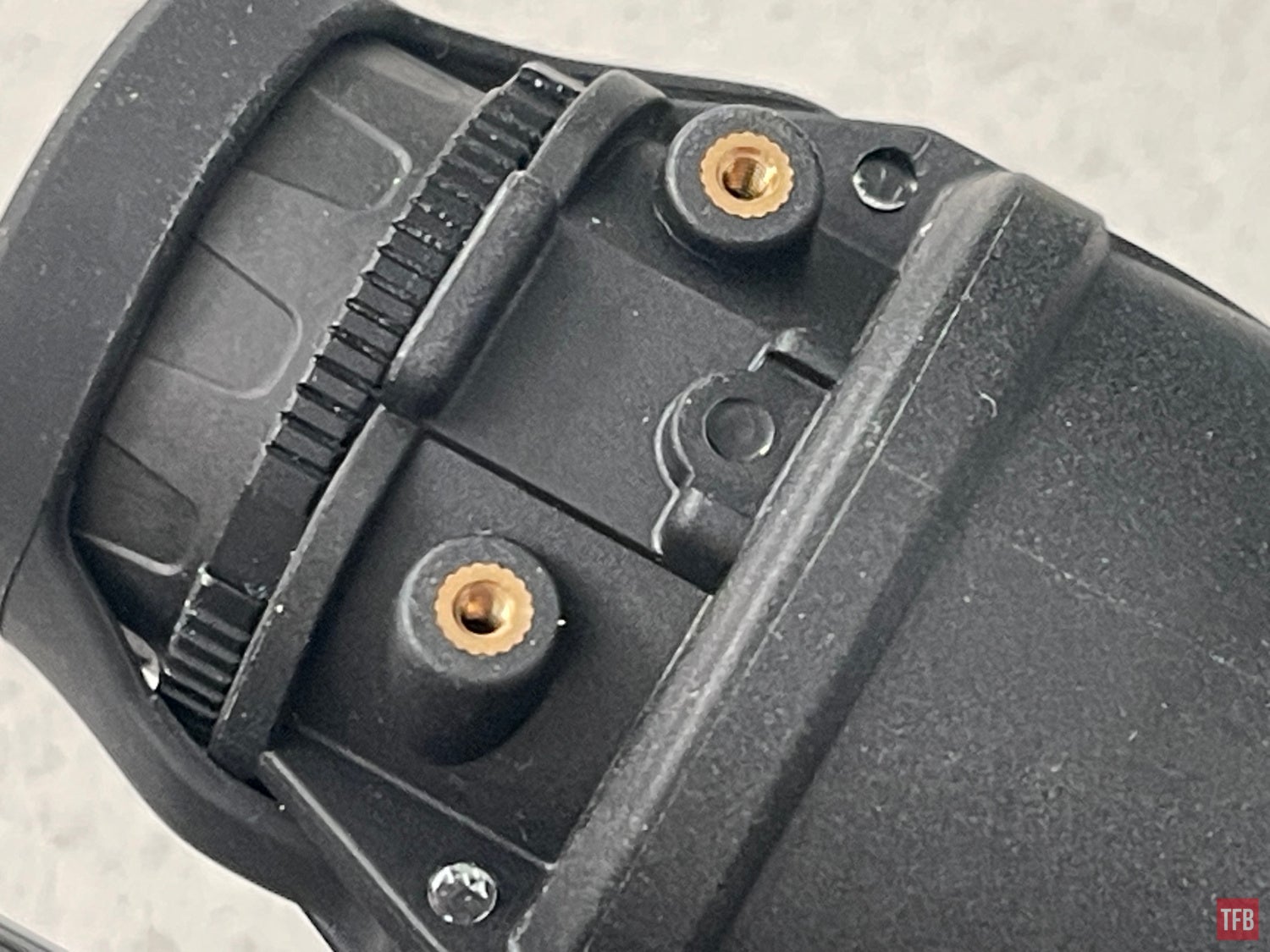
The J-31 comes with two brackets that you screw into each pod. I only have a single Jerry-C so I only installed one of the mounting brackets.
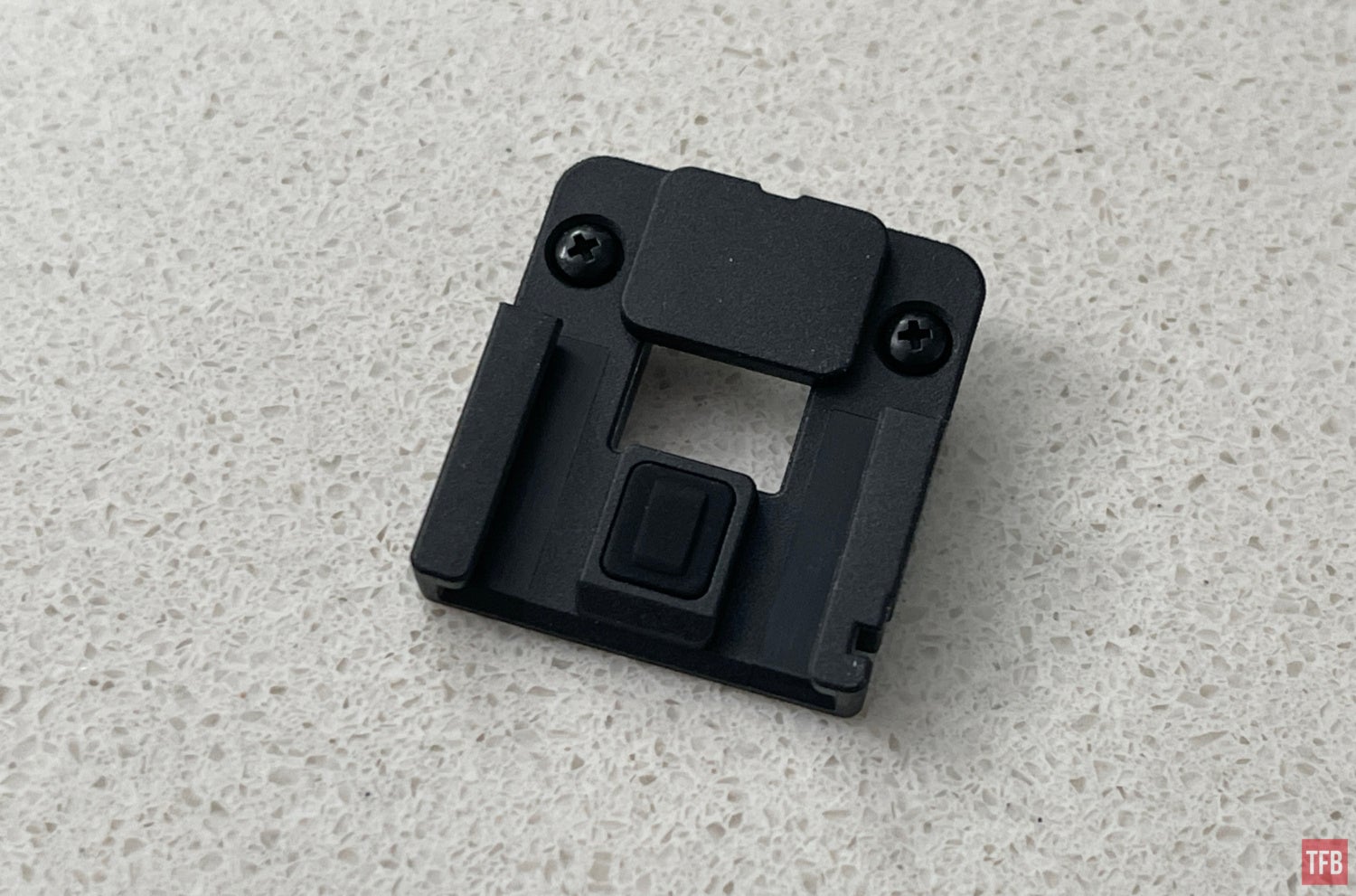

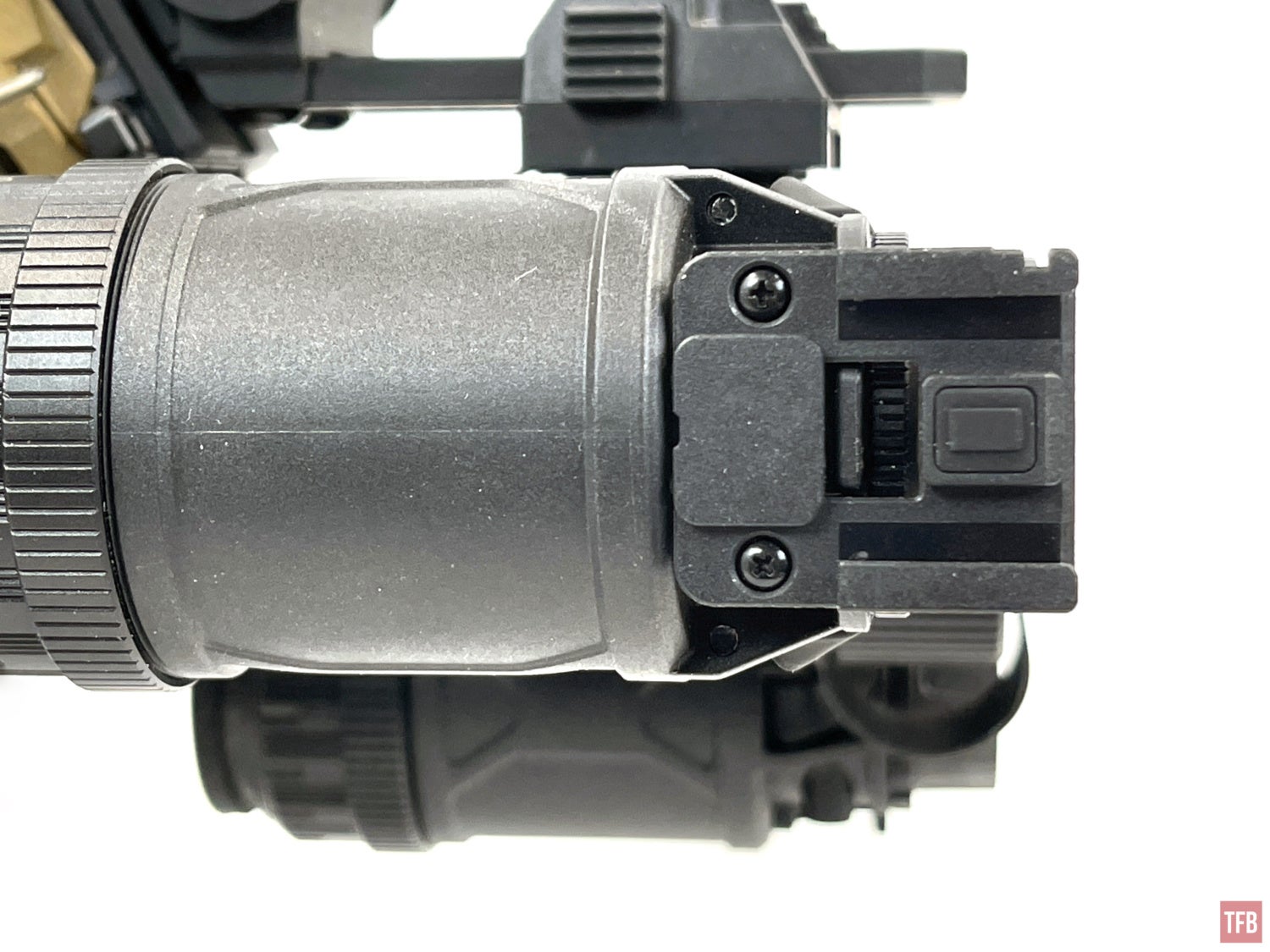
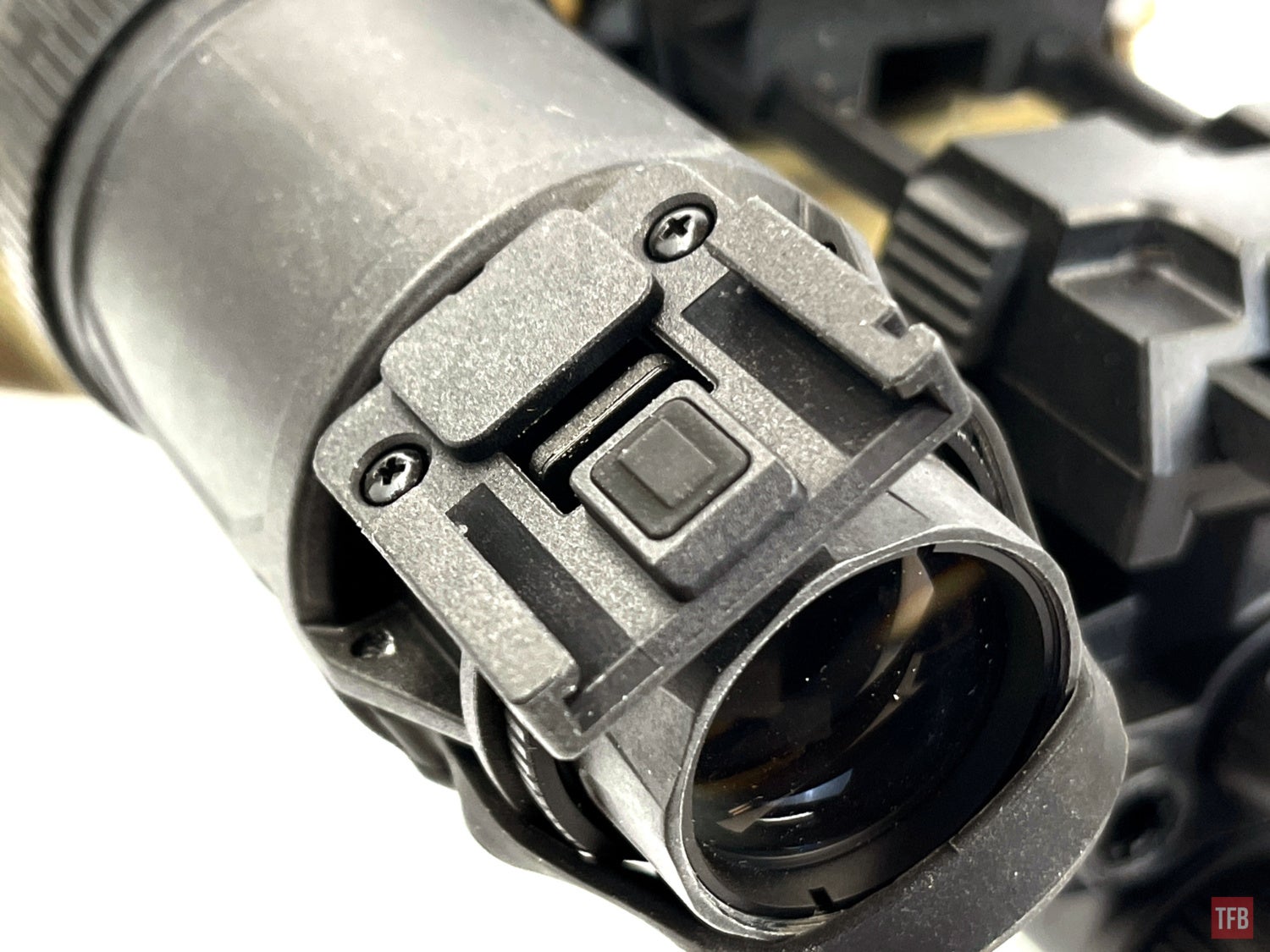
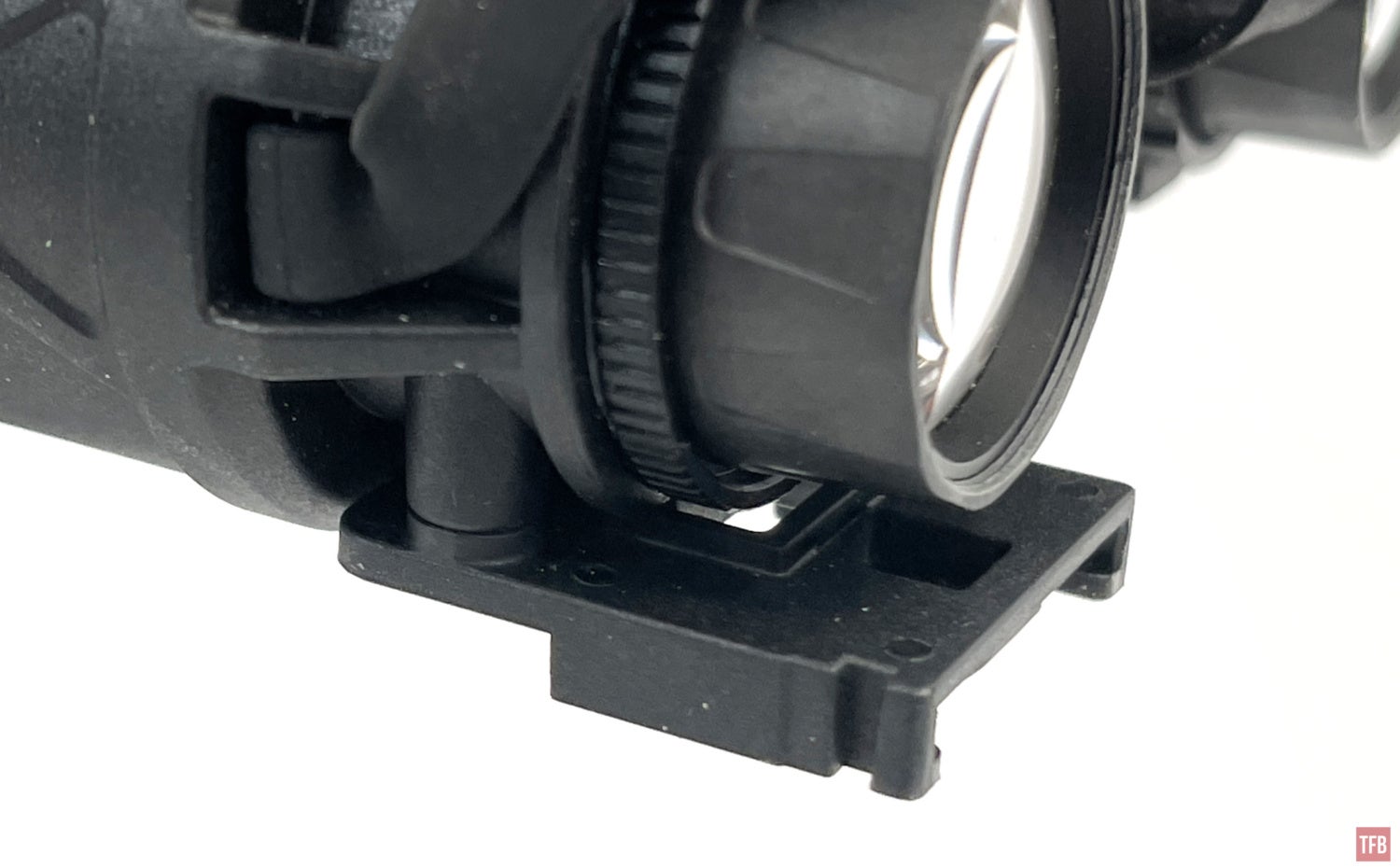
This way you do not need to use the universal clamp mount for the Jerry-C.
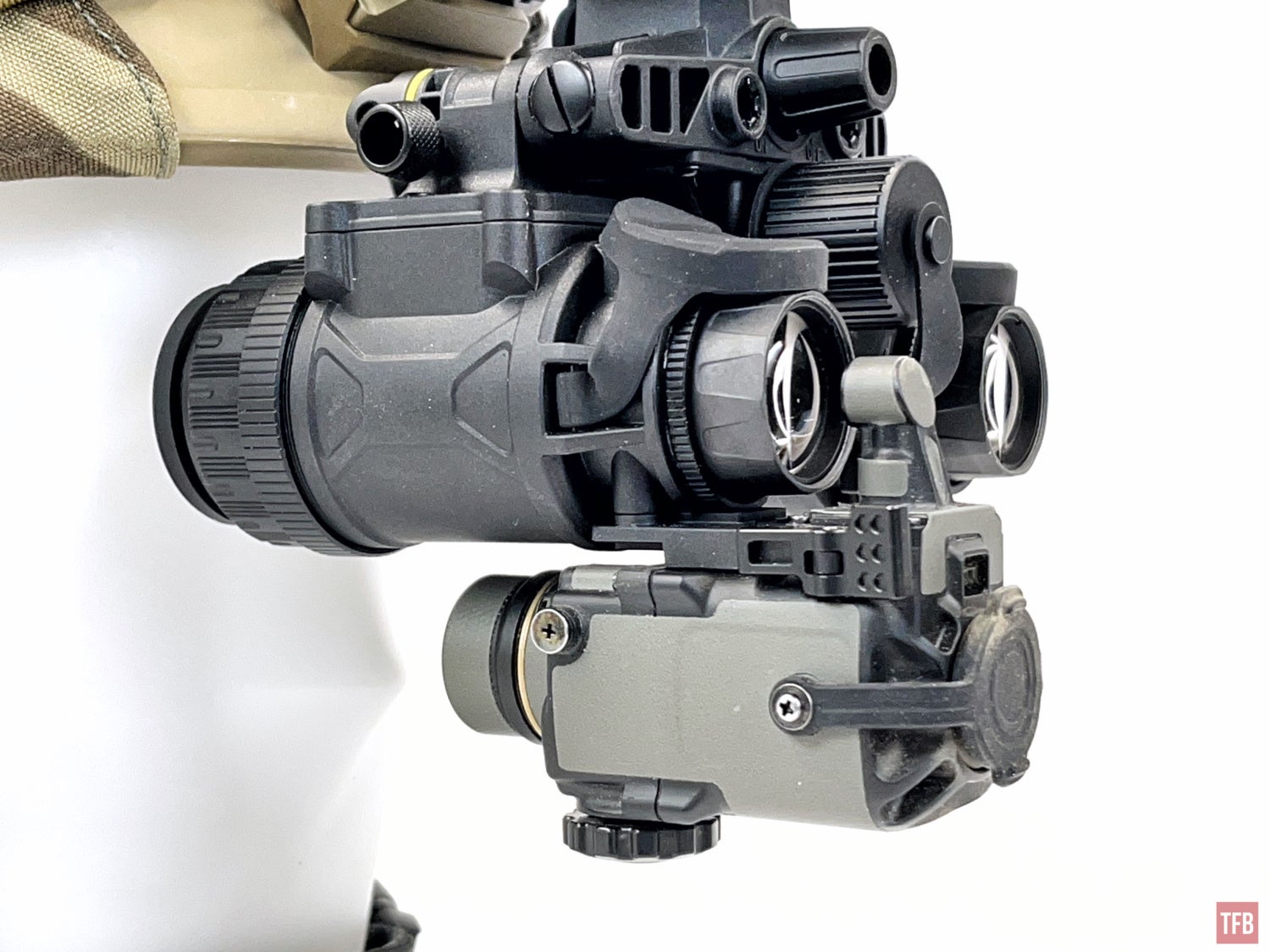
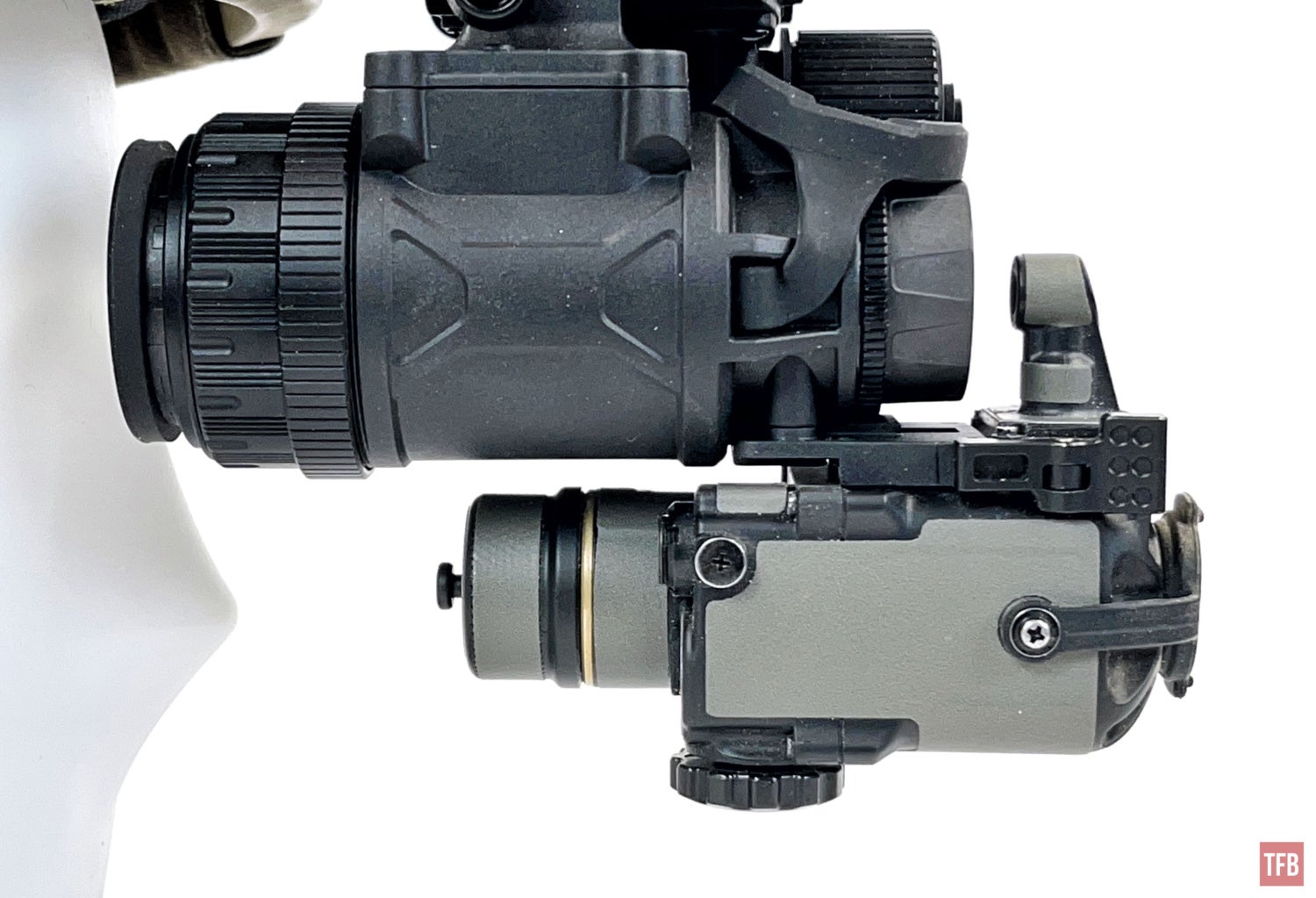
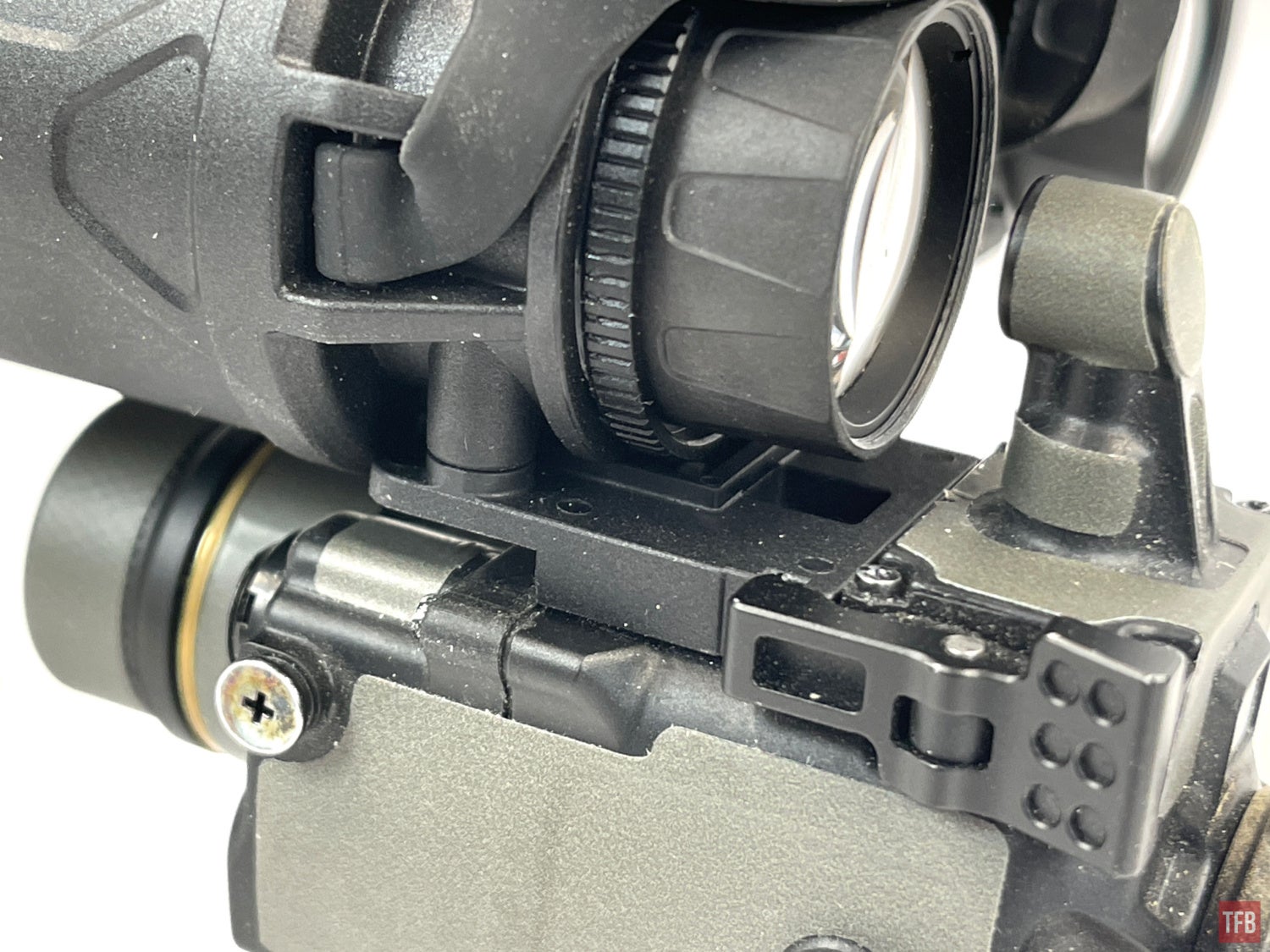
Minor Inconveniences With The J-31
Since the J-31 has an integrated Jerry-C mounting bracket, it is fixed at the 6 o’clock position of the monocular pod.

With a regular COTI-style clamp-on mount, you can rotate the clip-on device and position it between the objective lenses like my ECOSI on my Mikron-D seen below.
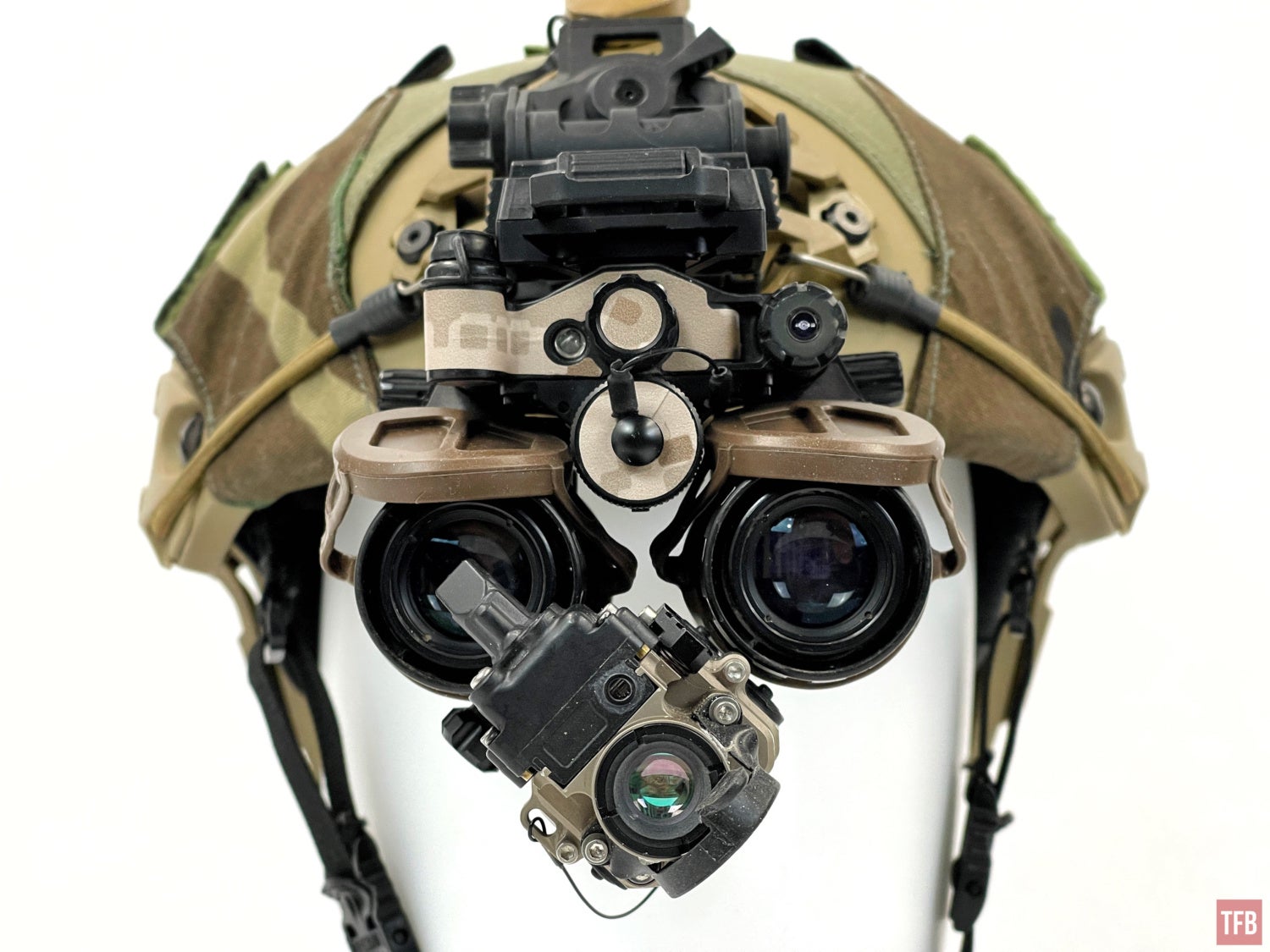
You may have noticed the J-31 has integrated objective bikini covers. They have pin holes in them to act as day filters.
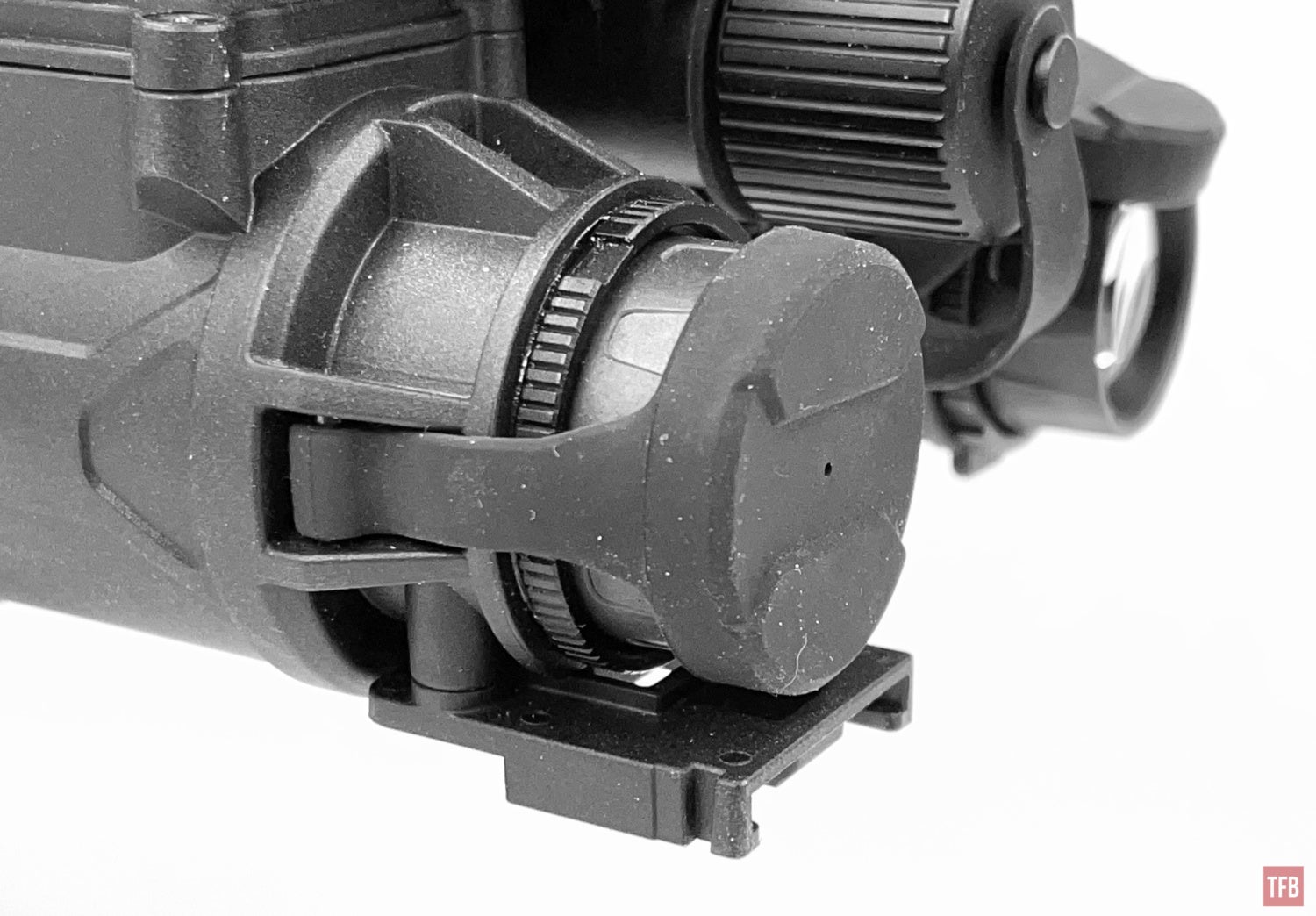
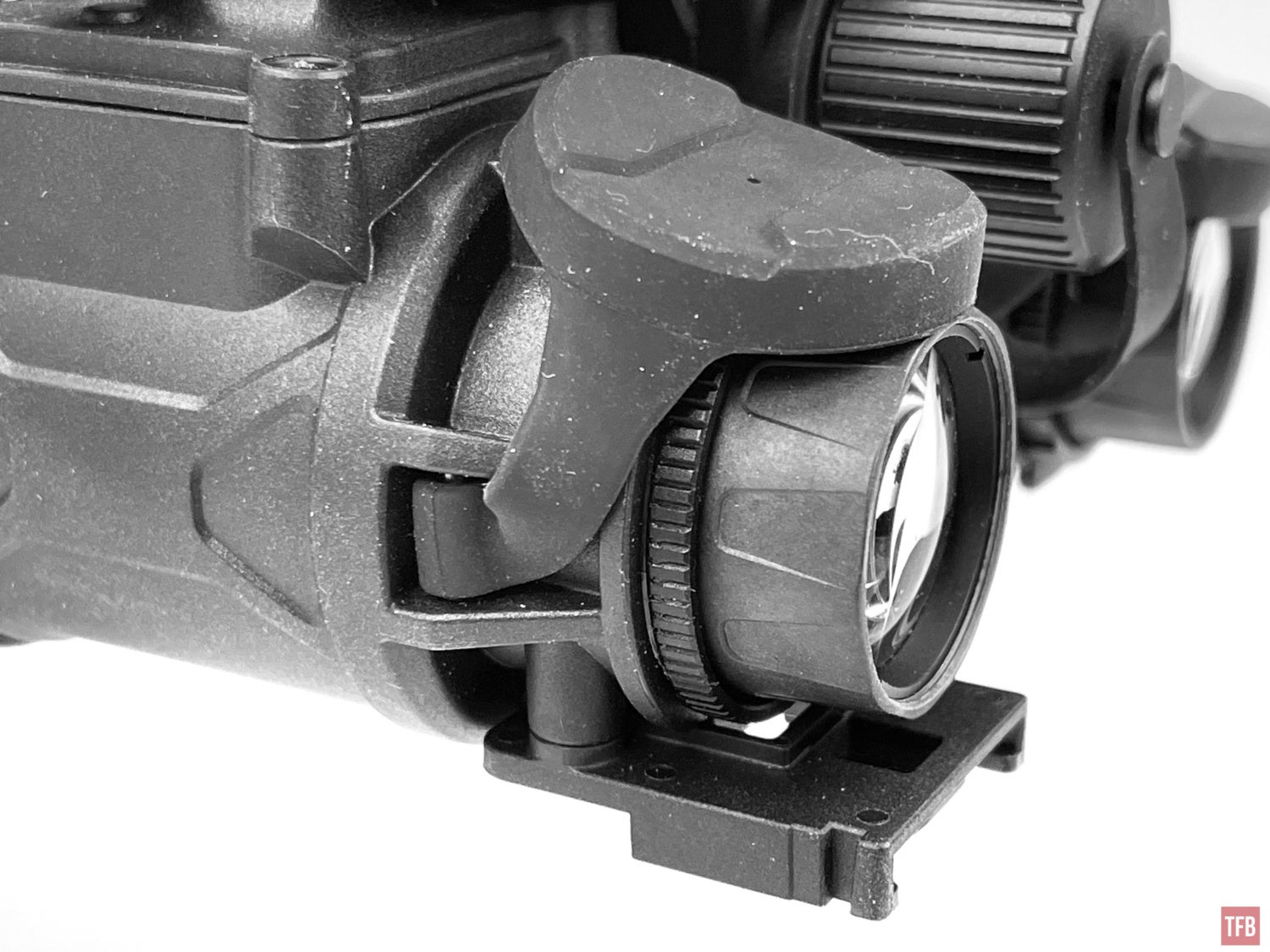
One issue I have with them is they are proprietary. The bikini cover is held in place with pins on either side. I am not sure if you can replace the cover if it gets torn or breaks from long-term use.

Another issue with the J-31 is the dovetail. See those rubber circular bumps? Those are there to help take up any slop in a dovetail mount. However, they seem to interfere with my Wilcox G24 and Argus LWNVM. I removed the rubber bumps by ripping them off the dovetail and still found it hard to lock into my NVG mounts. It seems the dovetail is slightly out of spec. Cold Harbor Supply offers a replacement dovetail but it is around $80 shipped to the US from Canada.

A Peek Inside The J-31
These J-31 binos came pre-installed with NNVT image intensifiers. These are China-made image intensifiers that are similar to Photonis technology, they are Multi-Alkali Gen2+ technology. I was curious to see how the J-31 was managing manual gain control so I removed one of the pods to look under the hood.
Interestingly the NNVT tube does not have the typical contact pads on the side of the tube body. Instead, power and manual gain are sent via the three wires coming out of the tube. See where the wires plug into the board in the housing arm? There are two brass contact springs. So it appears the J-31 can use regular 10160 tubes you just will not have manual gain.
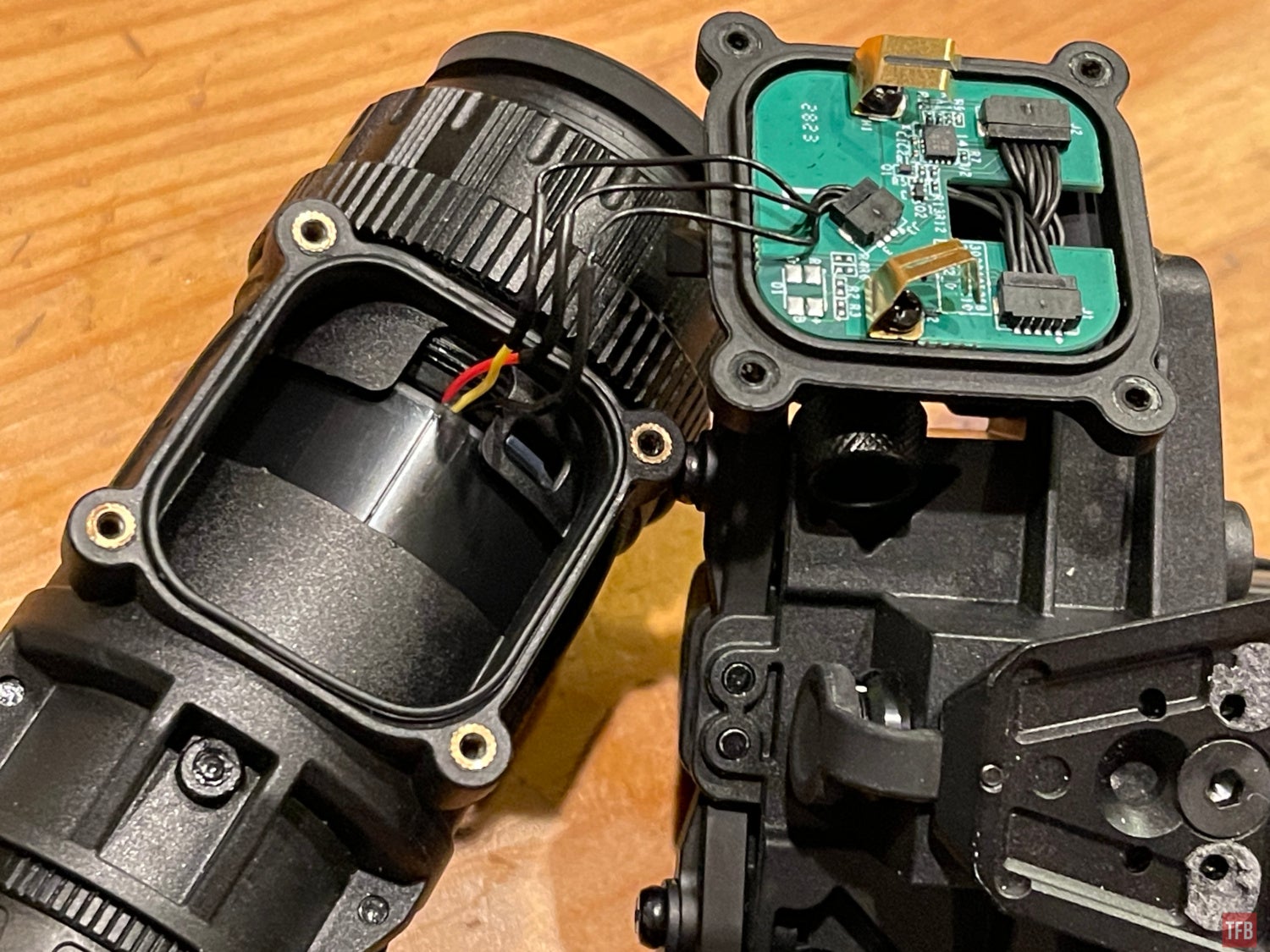
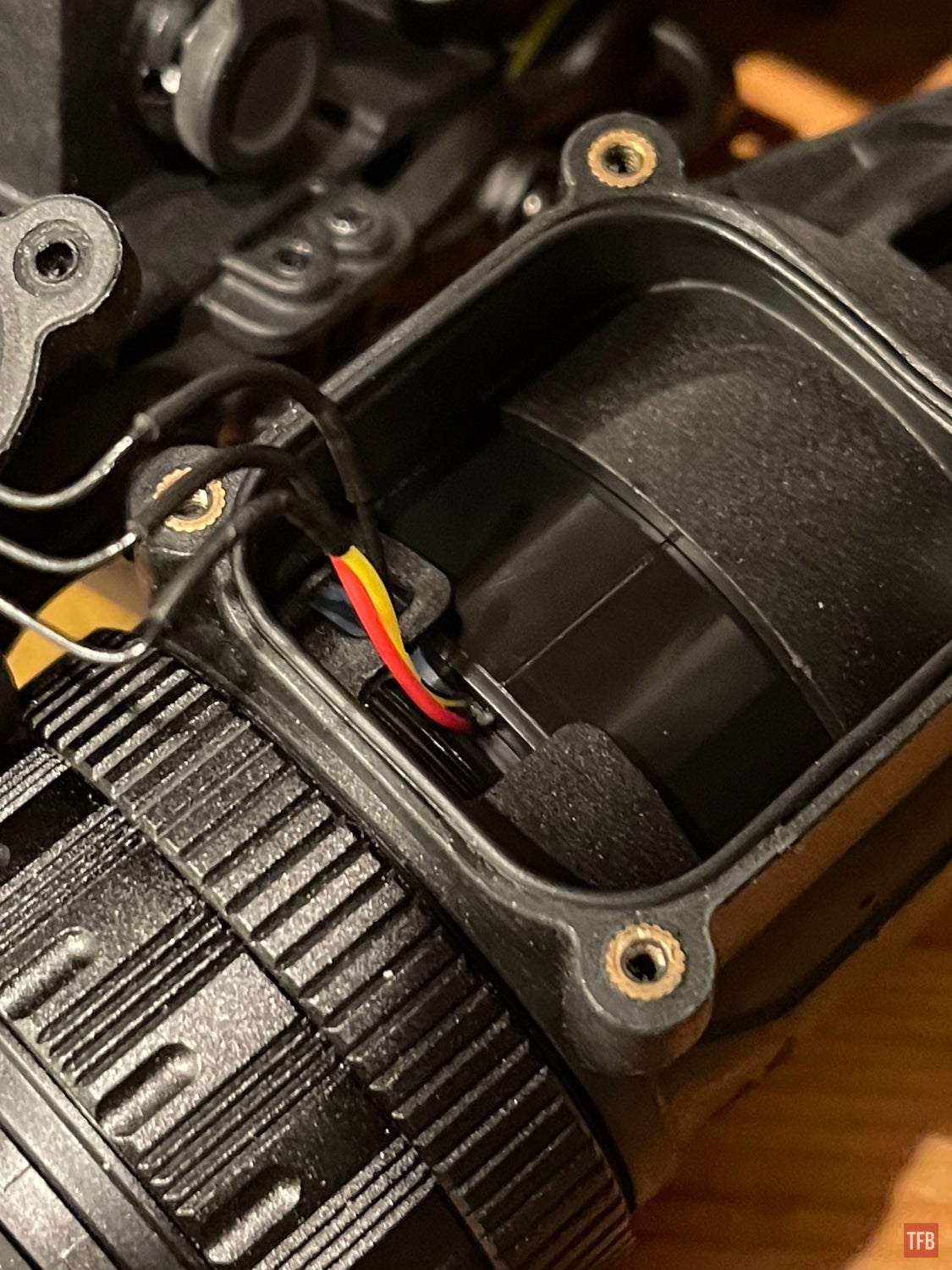
Using The J-31
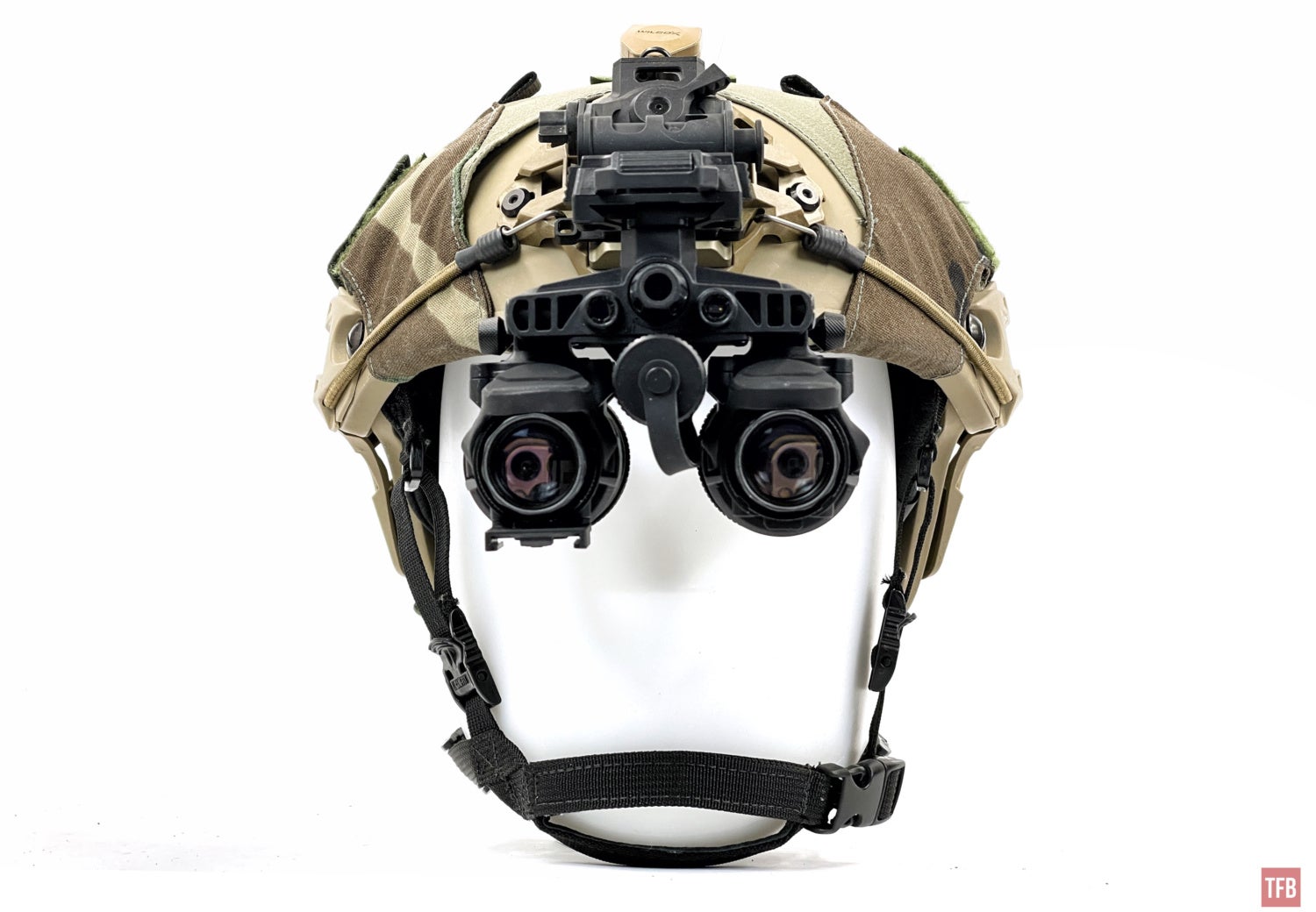

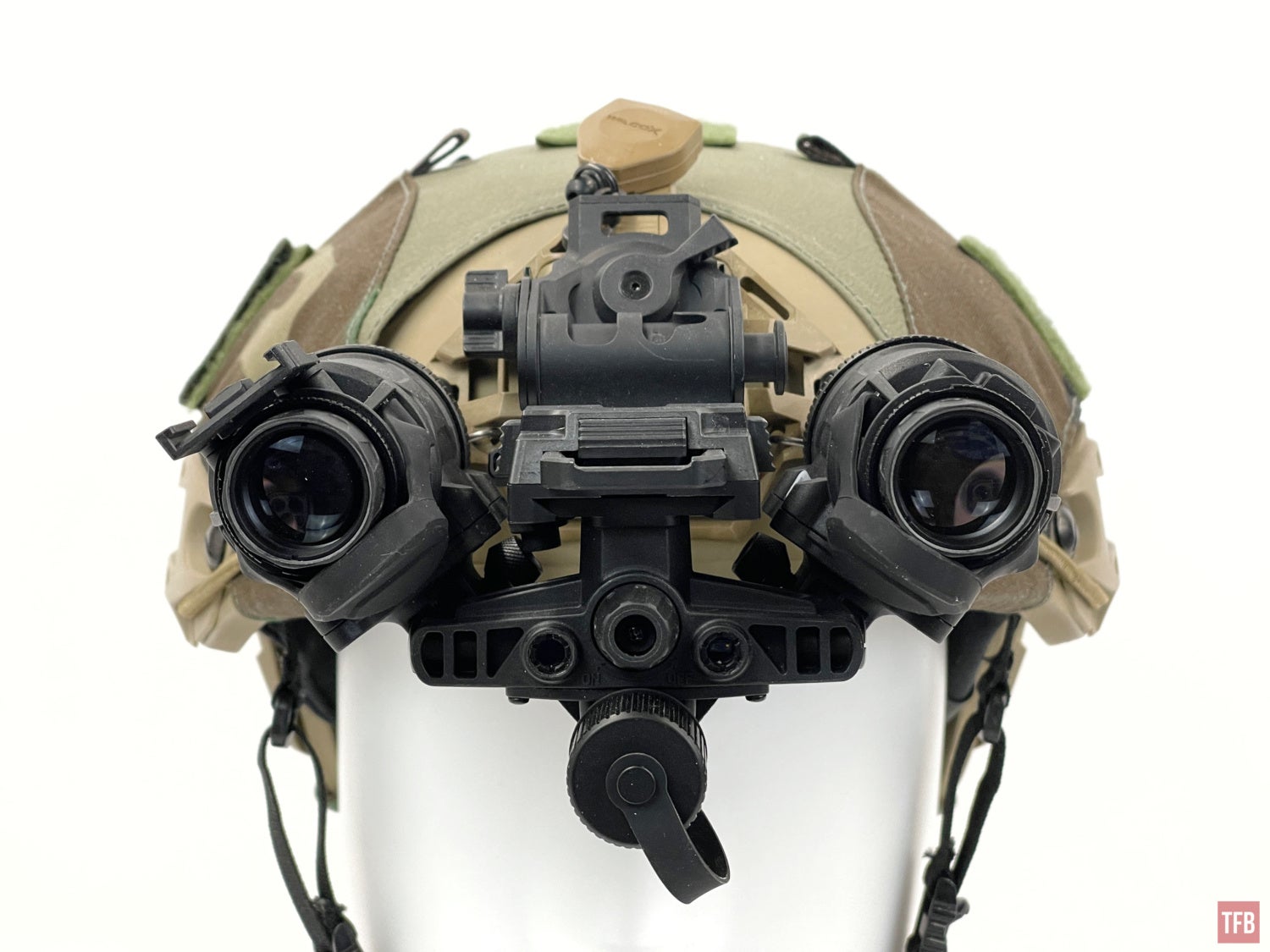

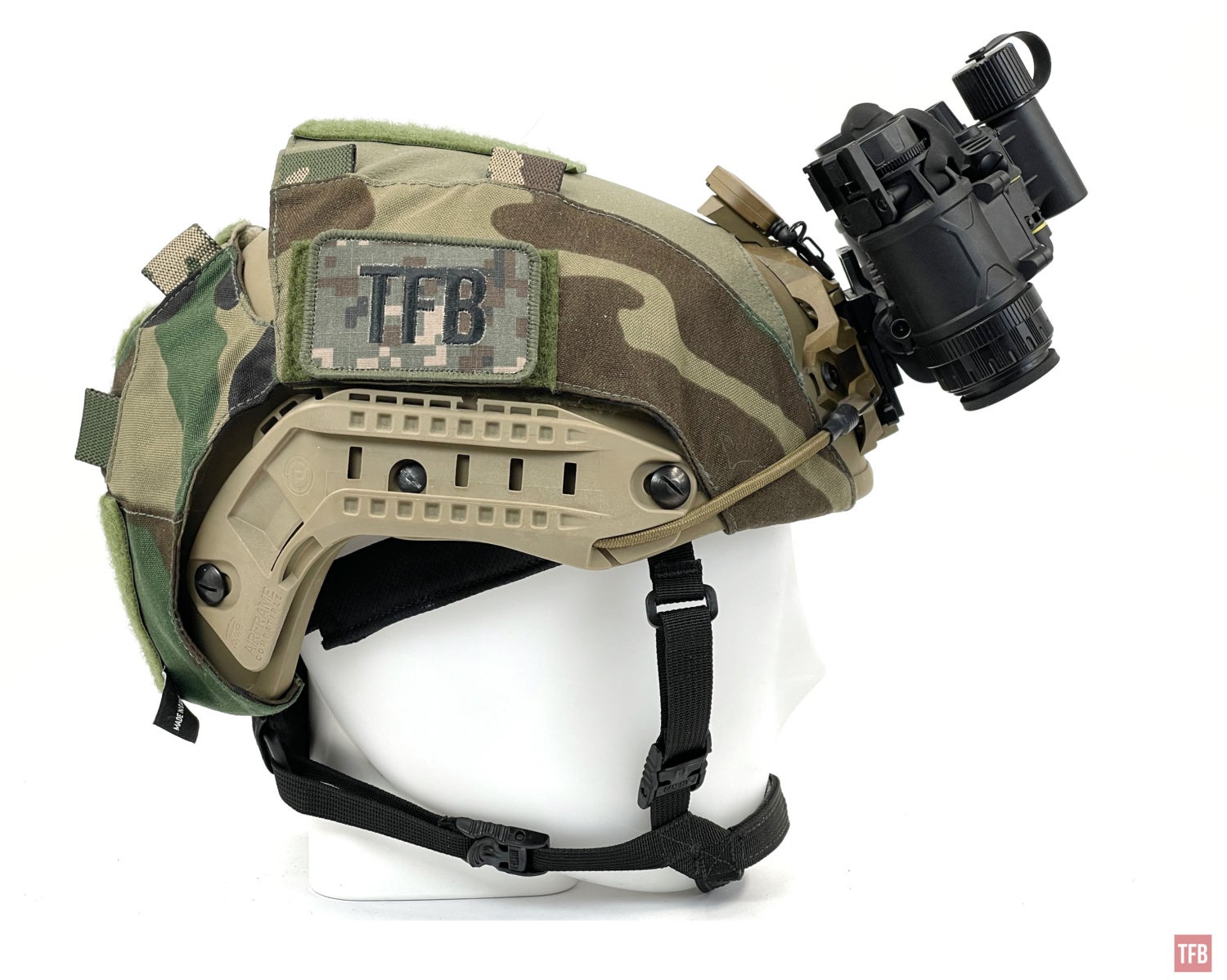
One thing you will notice right away is the objective lenses lack anti-reflective coatings. No typical blue coating to prevent glare. Also, the lenses are smaller than traditional PVS-14 optics. When I got the Jerry 31, I immediately tested the lenses. I saw chromatic aberrations in zones 2-3. As long as I look in the center aka zone 1, there are no issues. But outside of that, I see a rainbow effect on things that reflect or give off light.
Here is a screenshot from a video I filmed through the Jerry 31. See the metal trim around the sliding closet doors? You can see a rainbow effect emanating from them. If I move the objective over to those areas, that effect goes away. It only shows up in the outer zones 2-3 of the image.
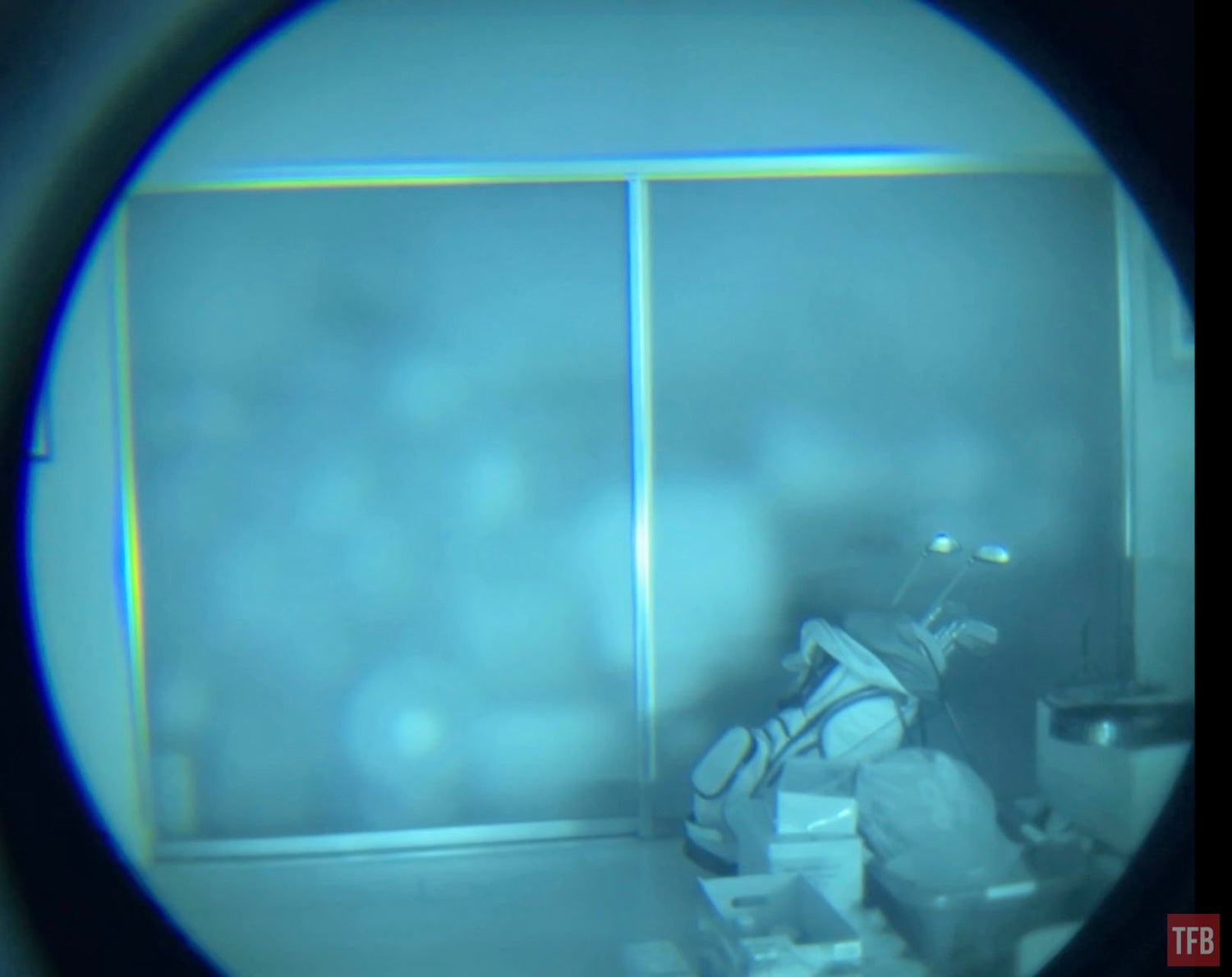
The lenses produce some lens flares. Here is a video showing those and the chromatic aberration.
I used the Jerry-31 during a night shoot and there was a full moon out. Even with the low spec NNVT, allegedly the tubes in this unit are 1400 FOM, the image was decent. There was a bit of noise even with the full moon illuminating everything but everyone that looked through them all thought they were decent goggles.
Jerry 31 Case
The J-31 has one of the best-looking packaging I have seen for night vision devices. Clean and bold lettering. Whoever designed this did a great job.
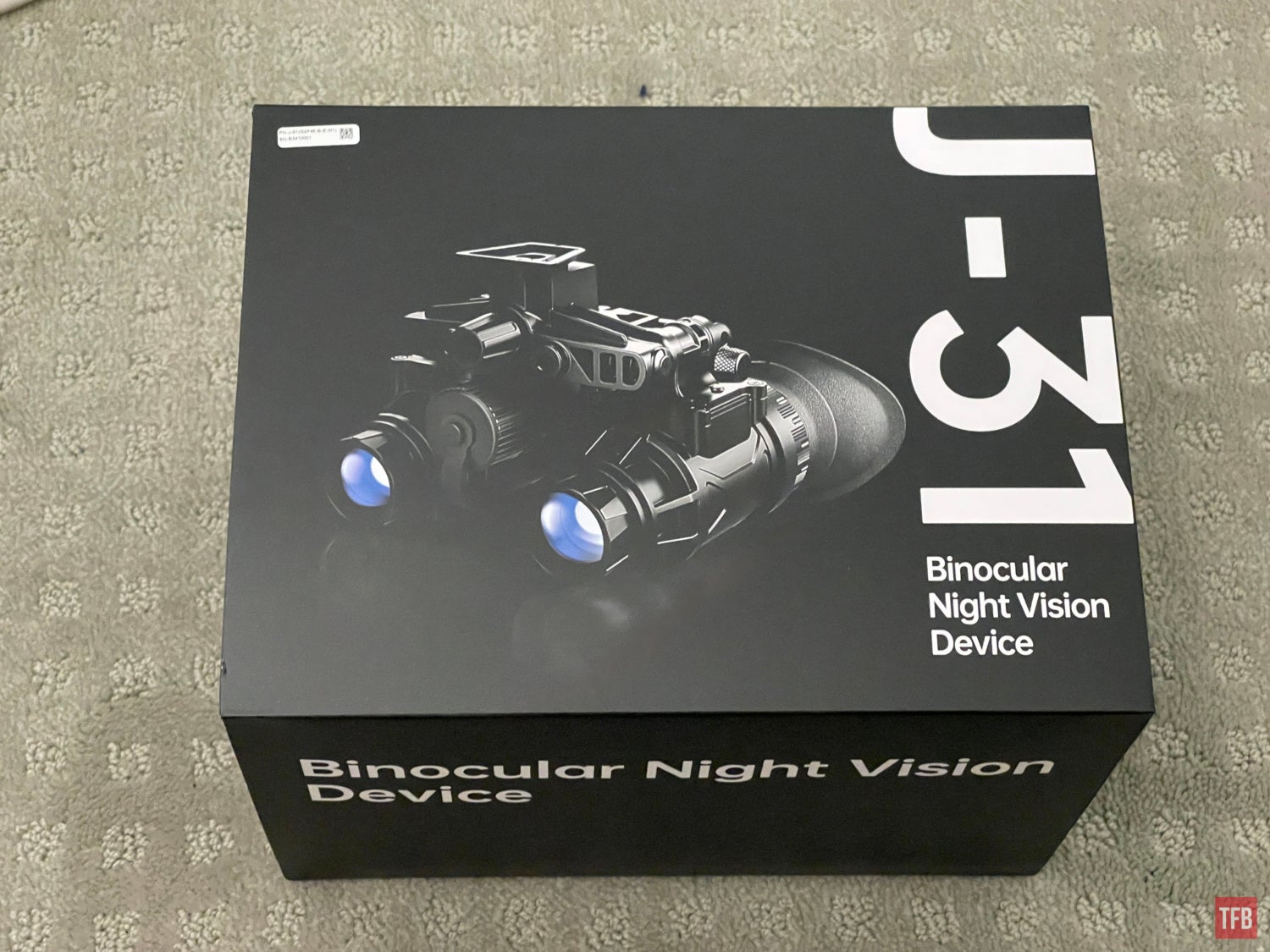
Open it up and there is a precut closed-cell foam surrounding the padded NVG case inside.
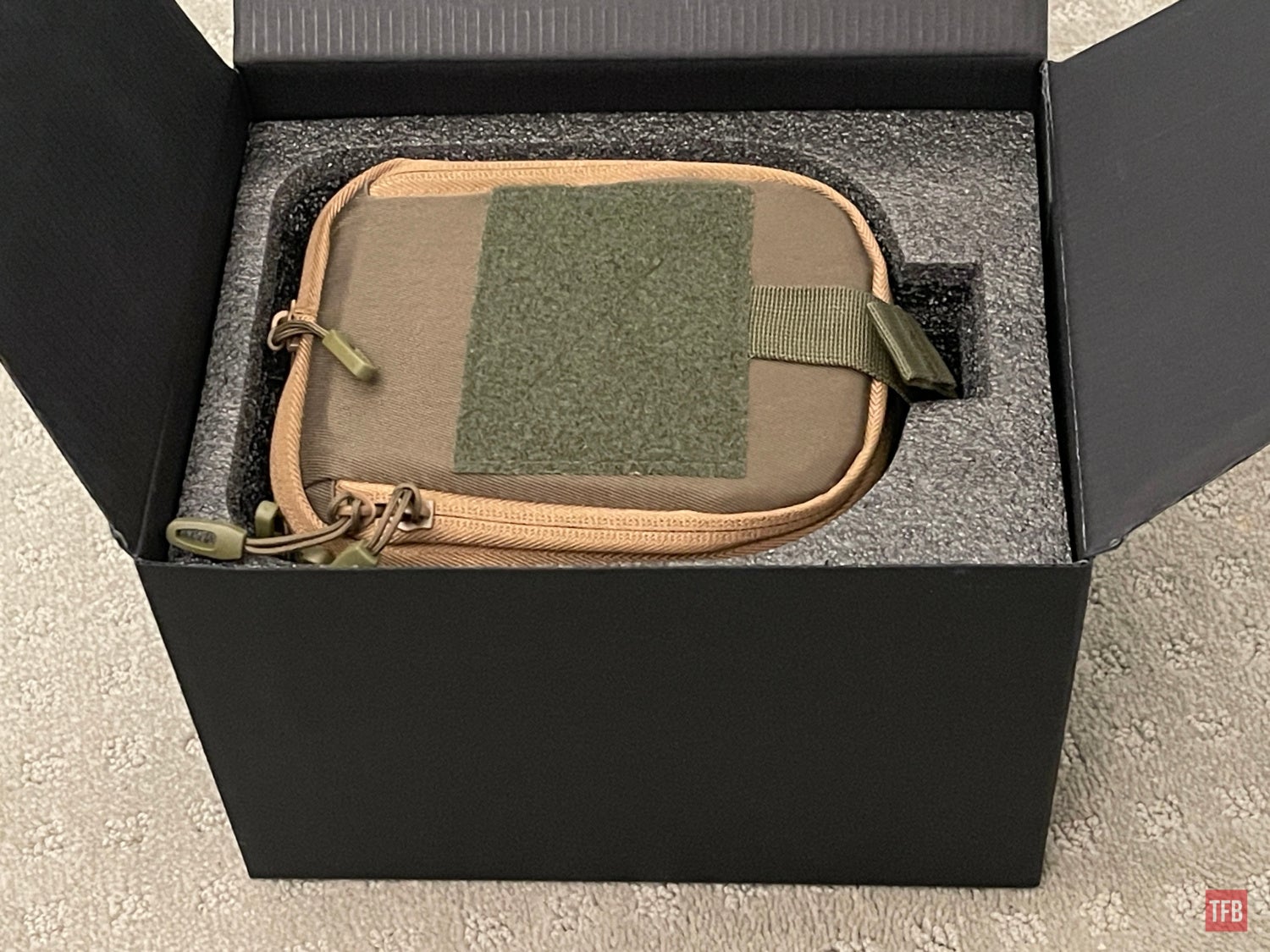
The case that the J-31 comes in is very similar to the TNVC NVG pouch only this is actually better since it has rigid and padded side walls as well as padded floors in each compartment.
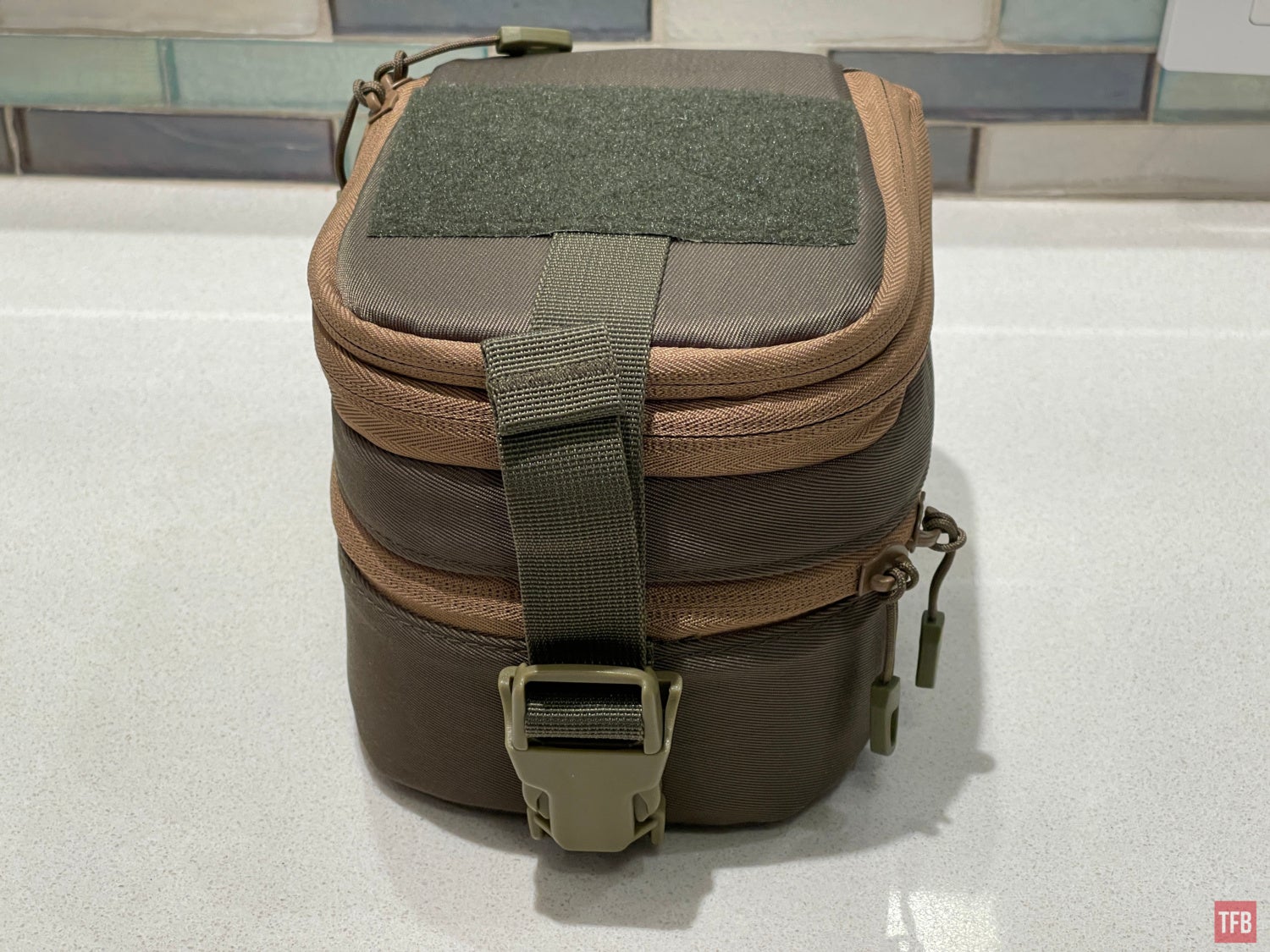
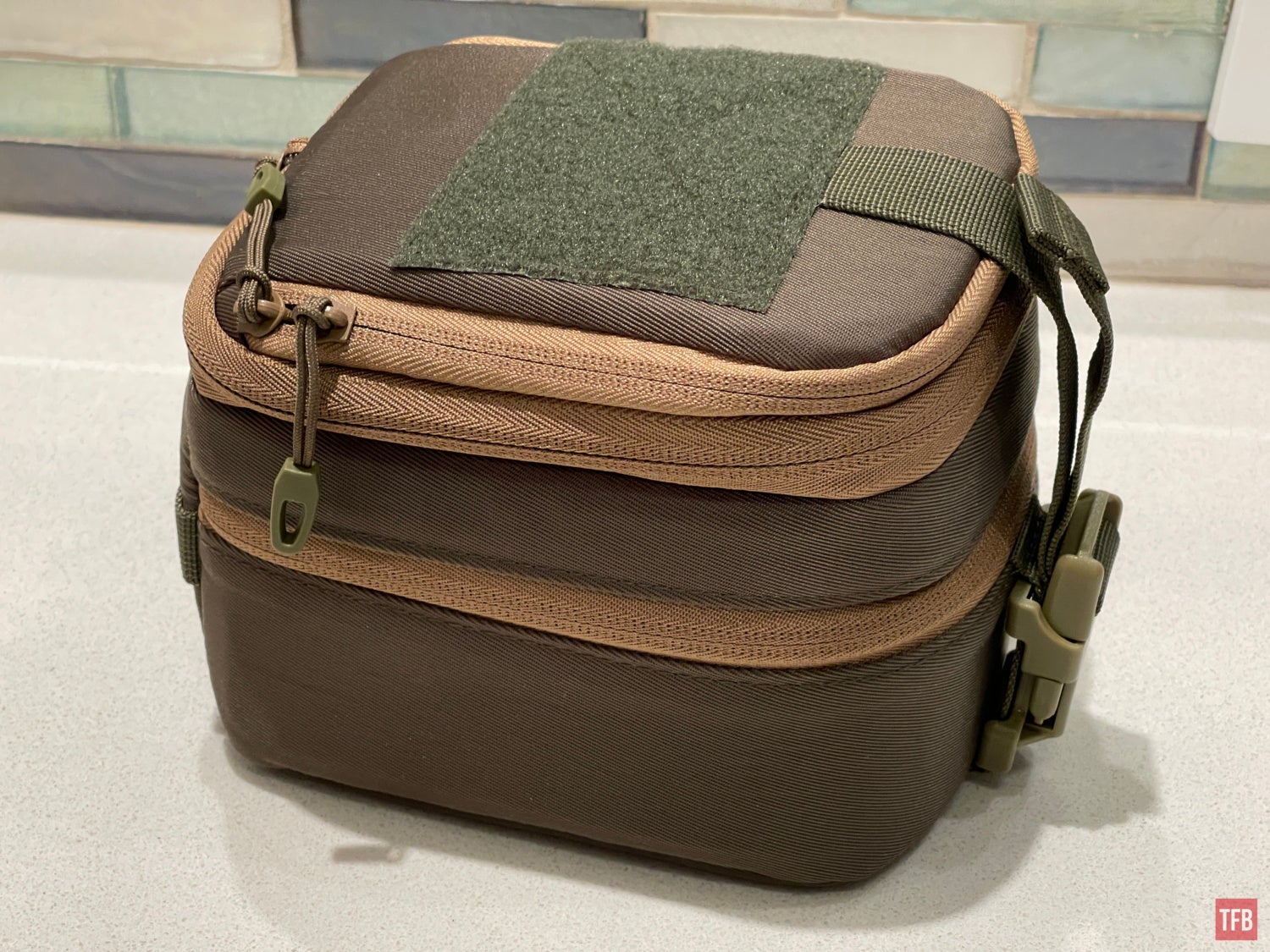
Just like the TNVC pouch, the InfiRay pouch has an expansion zipper that you can unzip to make the top section accordion expand.
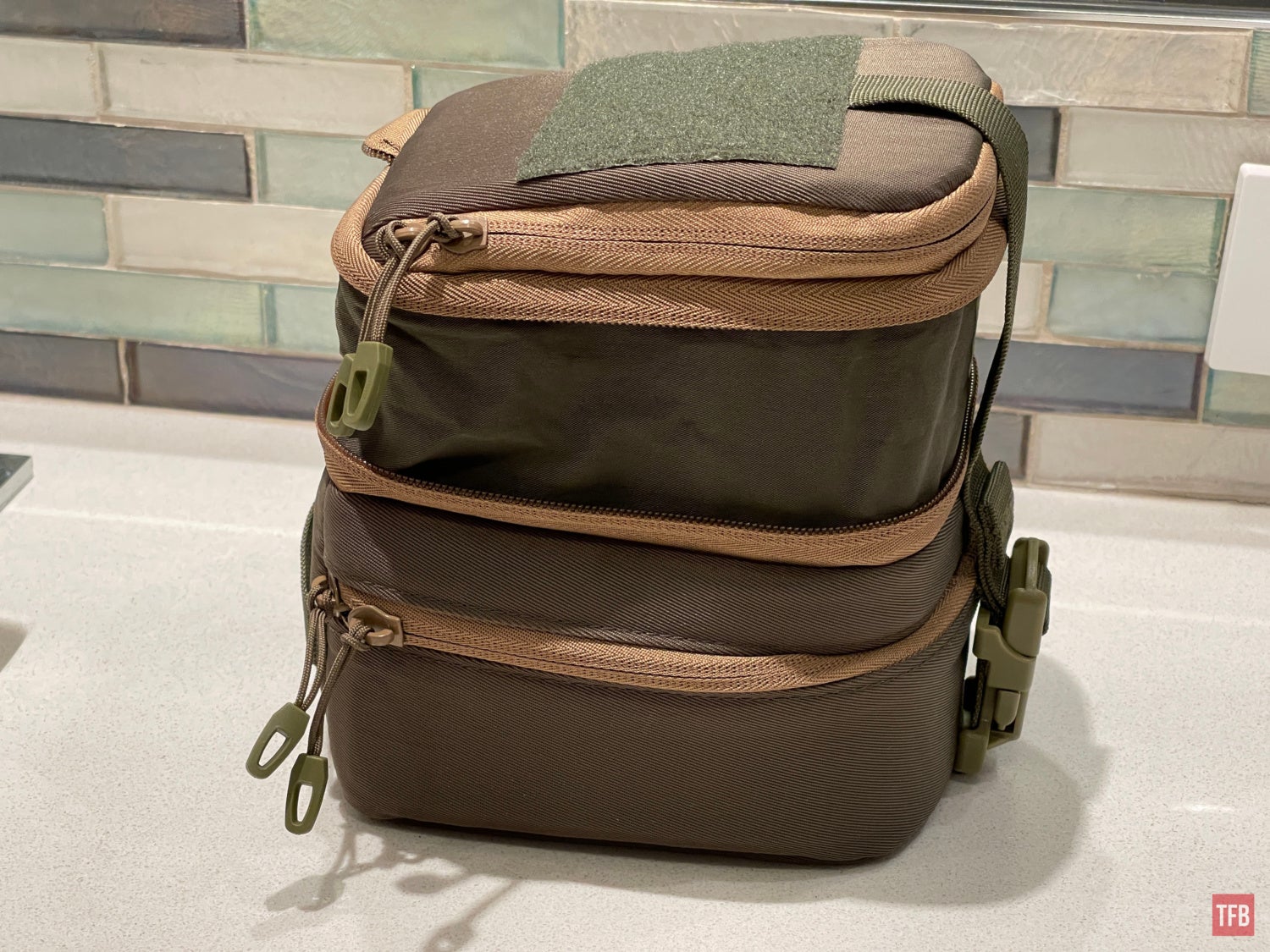
Here it is next to my TNVC pouch. The InfiRay pouch is narrower than the TNVC but it is a little bit longer.

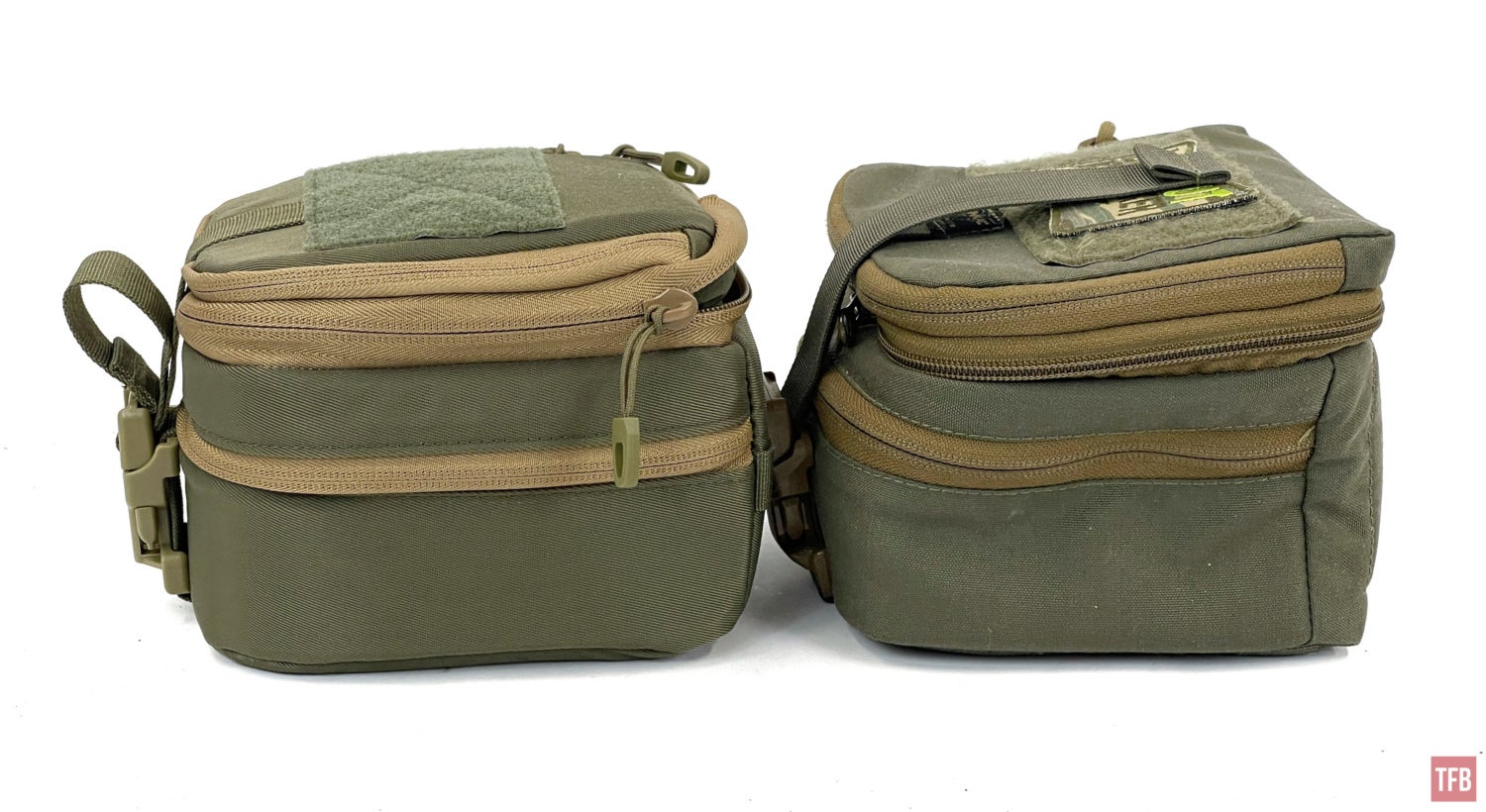
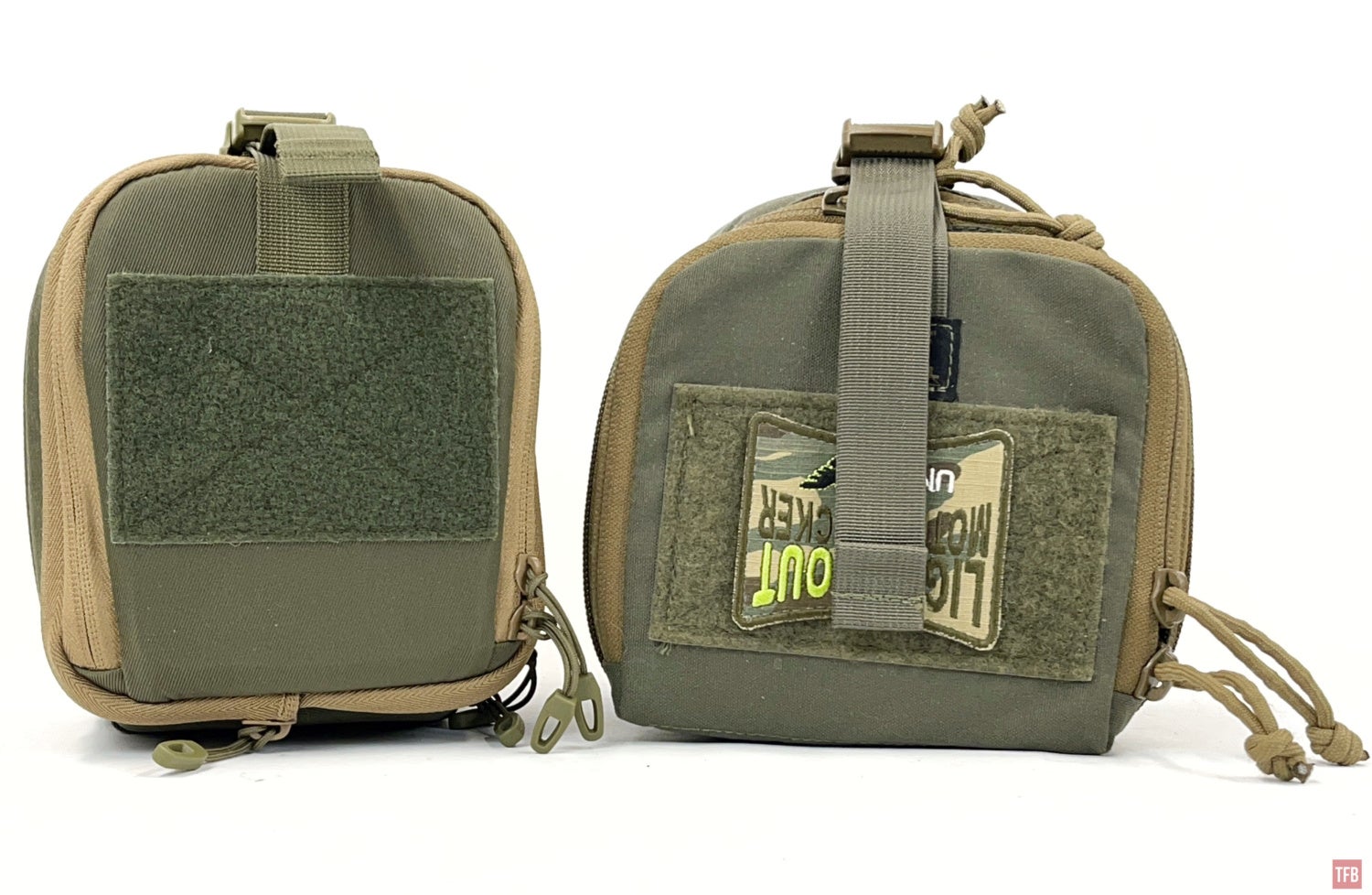
There are zippered pockets in each of the lids.
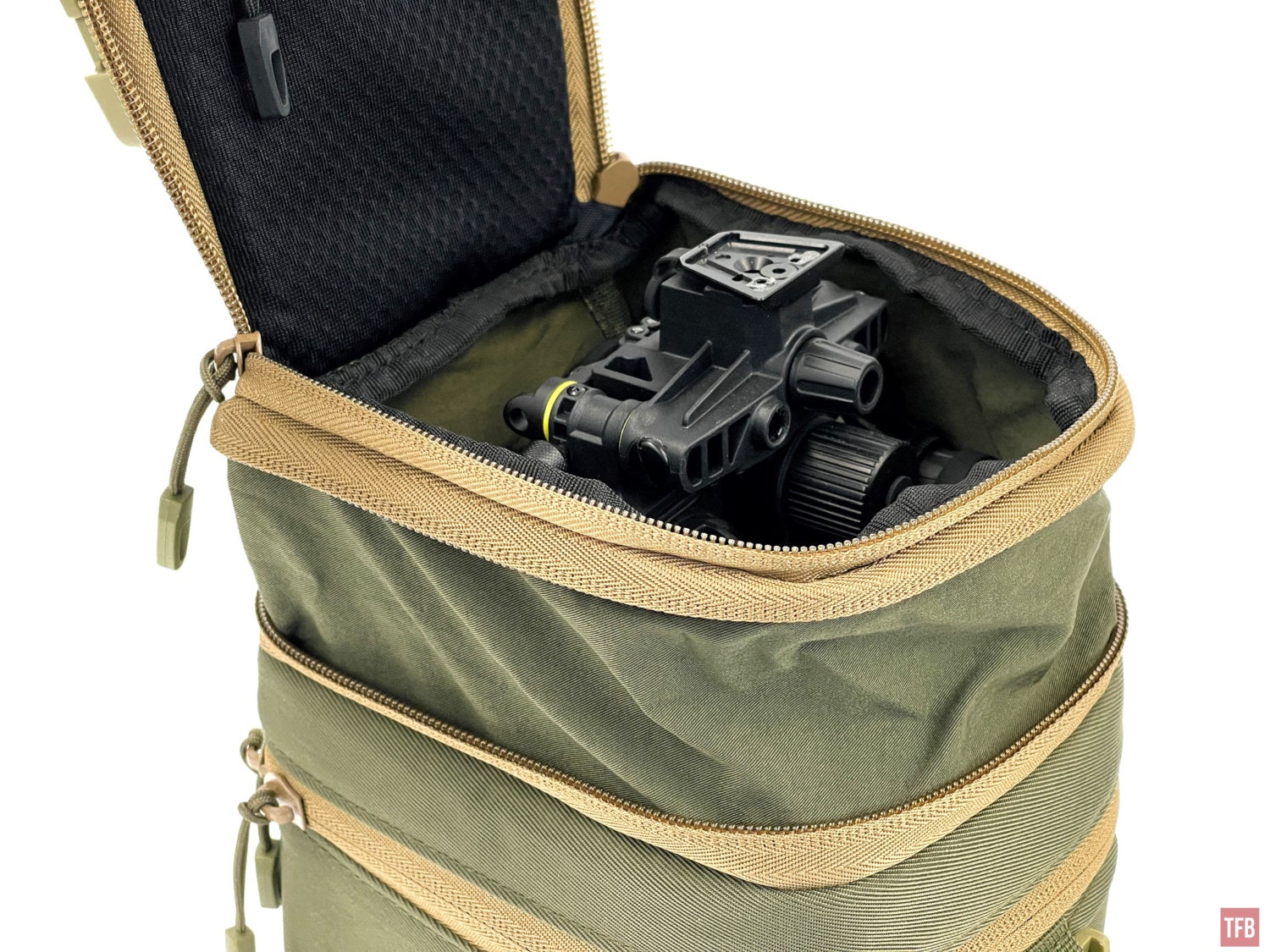
The bottom compartment is padded and has a padded divider to store accessories like a Jerry-C.

Just like the TNVC pouch, the InfiRay pouch can fit inside your helmet for transportation protection.

Final Thoughts On The J-31
The J-31 was sold at an introductory price of $3,899 on Custom Night Vision’s website. They sold out in a very short time. The regular price will be $4,199 when he restocks. I was more interested in the performance of the NNVT tubes than the housing. As I expected, they still see in the dark. While they are not Gen 3, they get the job done. I can see, I can aim and shoot with them. The J-31 will be the next AGM NVG-40/50 budget entry-level binocular at the $4,000 price tag.
InfiRay just needs to fix the dovetail so it locks easier into dovetail mounts and then it will be perfect. I can overlook the lens issues since this is a budget system but not being able to lock the dovetail into the mount without pressing it in like its life depends on it, is annoying.
For more information check them out at Custom Night Vision.
 Your Privacy Choices
Your Privacy Choices
